

BOWL |
EGG BOWL
No flag and we paid the penalty! We Were Robbed




No flag and we paid the penalty! We Were Robbed

by Donny Rouse, CEO, 3rd Generation
There’s no doubt about where the nation’s best college football is played — right here on the Gulf Coast.
The SEC is arguably the nation’s best college football conference, and I watch as many games as I can. In my family — same as yours, I bet — game days outrank all over events. You don’t dare plan a party, or even get married on a Saturday during football season, unless it’s a bye week.
There’s always a lot of good-natured smack talk leading up to game day. Blockbuster games like LSU-Alabama (or Alabama-LSU) are built on smack talk, and the back and forth between our store directors and district managers in Louisiana and Alabama is always fun. I’m a fan of in-state competitions, too. They just mean a little more. The Alabama-Auburn matchup is one of the biggest rivalries in all of college football.
But it’s not just the SEC that holds our attention and our hearts. If you follow college football you know Tim Rebowe, head coach at Nicholls State University in my hometown of Thibodaux. Rebowe led the Colonels to the FCS playoffs two years in a row. You don't really have a football game without a tailgate, and Thibodaux is quickly becoming one of the best tailgating cities in the South. Fans — including my own family — are out there every home game. My daughters always wear their cheerleading uniforms.
We also tailgate before Saints games. I think the MercedesBenz Superdome is one of the best stadiums in the NFL because of its location. It’s walkable from the bars, restaurants, hotels and, of course, our Rouses Market on Girod and Baronne streets, which is right on the 50-yard line for all of the excitement.
This is going to be a heck of a season. A lot of fans are still bitter about last season’s no-call. I’m looking forward to Miami. I enjoyed that Super Bowl in 2010, and I’m ready to watch us win there again!


You need about 10 pounds of boneless pork belly, with the fat, meat and skin on, cut into 11/2-inch cubes, to make these gratons. I like to start them off in a little bit of water. Pour a little bit into a large, deep, black-iron pot. Add the pork. Stir constantly for two hours. Remove meat with a slotted spoon (reserve the grease) and drain on paper towels. Cool in the fridge for a couple of hours.
When you’re ready to pop them, heat the pot over medium heat. When the grease gets to about 350°F, add the pork belly. Stir every few minutes with a long-handled spoon. When the pork skins start to pop, remove them with a slotted spoon and drain them on Rouses brown paper bags. (Make sure you shake them around a little so they don’t stick.) Let these cracklins cool for about 15 minutes, then transfer them to a paper bag. Add some Creole seasoning and shake until well seasoned.
I want the food almost ready at kickoff. When it’s cold outside, I’ll sometimes make gratons. I use my uncle Tim Acosta’s recipe for 3-2-1 ribs when I cook on the Big Green Egg. Get the recipe at www.rouses.com.
A lot of people set up in one spot, but I like to walk around, especially when we have good weather.
Caprese
Chicken Dip Roasted Red Pepper Tapenade
Gumbo with Grits



Place the Chex Mix in a bowl and set aside.
Combine the butter, brown sugar and root beer extract in a pan. Simmer until the brown sugar melts into the mixture.
Toss the Chex Mix with the mixture until fully coated. Spread on a sheet pan lined with parchment paper and bake in a 350°F oven for 10 minutes, or until the Chex Mix is crispy and the butter and root beer mixture has baked into the Chex Mix.
Remove the pan from the oven, and set aside to cool.
After the mix has cooled, place in a bowl to serve — then go back again and again because it is addicting!


Sarah Baird is the author of the books New Orleans Cocktails and Short Stack Edition: Summer Squash. Her work appears regularly in/on Saveur, Eater, GQ, First We Feast, PUNCH and Food & Wine. She was the longtime food editor and restaurant critic for the New Orleans alt-weekly, Gambit Weekly
David is a regular contributor to The Atlantic, The Week and Mental Floss. His work also appears in Vox, The New York Times, Writer’s Digest and Foreign Policy magazine. He is a regular commentator for television and radio.
Channing Candies, a photographer based ini Schriever, Louisiana, loves to travel, but says there's nothing like fishing and camping at home in South Louisiana.
Romney is a Mandeville resident and has been a professional photographer for over 25 years. He has styled and photographed food for hundreds of local and national publications, and for several cookbooks. His portrait series of chefs and bartenders, titled “Shakers, Knives & Irons,” was recently displayed in New Orleans and Los Angeles.
USA Today Network reporter Luke Johnson covers the Saints (and other interesting things) for the USA Today network. He is a United States Marine Corps veteran.



Justin A. Nystrom is the Peter J. Cangelosi/ BEGGARS Distinguished Professor of History at Loyola University New Orleans where he teaches American History, Foodways, and Oral History. He is the author of the James Beard nominated Creole Italian: Sicilian Immigrants and the Shaping of New Orleans Food Culture and New Orleans after the Civil War: Race, Politics, and a New Birth of Freedom.
Patti is a freelance copy editor, proofreader and copywriter with decades of editorial experience in both the marketing and publishing arenas. A native New Orleanian and a culinary devotee, she was part of many creative teams that crafted ADDY award-winning campaigns for a variety of clients, including tourism, professional sports and higher education.
Creg Stephenson has covered football for more than 25 years for a variety of publications in the Southeast. He lives in Theodore, Alabama (very near a Rouses Market, as a matter of fact), and writes for AL.com.
Michael Tisserand is a New Orleans-based author whose books include The Kingdom of Zydeco; Krazy: George Herriman, A Life in Black and White; and a post-Katrina memoir, Sugarcane Academy, about Tisserand and other parents persuading one of his children’s teachers, Paul Reynaud, to start a school among the sugarcane fields of New Iberia. Tisserand is a founding member of the Laissez Boys Social Aide and Leisure Club, a Mardi Gras parading organization.
1/2 teaspoon onion powder
1/2 teaspoon black pepper
4 tablespoons (2 packages) dry ranch dressing mix
11/2 tablespoons red pepper flakes
11/2 tablespoons Cajun seasoning
16-ounce package of Nabisco Premium Soup & Oyster Crackers
2 cups Rouses Extra Virgin Olive Oil
“ We are big college football fans and like a lot of houses in the South our loyalties are divided between two schools. We are convinced that dressing our boys in team swag actually brings bad luck, so we have been known to dress the kids in the other team's colors for the rivalry game. People often misinterpret this as a generosity of spirit.”
- JUSTIN NYSTROM
“ Every game, I gorge myself with party food and drink heavily. It has a 50-50 success rate. This year I’ll try to drink harder.”
- DAVID W. BROWN
“ I grew up in rural Wisconsin, where the Green Bay Packers reign supreme. My father would get too nervous to sit down and watch the games that I sat through religiously, but at halftime of every game we had to go out to the yard and replay the first half with our own official NFL football (signed by Brett Favre). That seemed to do the trick during Green Bay's highly successful run in the 90s.”
- LUKE JOHNSON
“ I watch football alone or in very small groups, the smaller the better (but ideally alone). And for God's sake, no kids running in front of the TV.”
- CREG STEPHENSON
Pour the olive oil, seasonings and spices into a large, gallon-size ziplock bag. Seal the bag and knead to thoroughly mix the ingredients together.
Place all of the crackers in the bag and re-seal. Gently turn the bag over several times to coat the crackers with the spice mixture. Let the bag sit overnight.
Remove crackers from the bag and lay them out on a sheet pan. Bake at 250°F for 15 minutes.

by Marcy Nathan, Creative Director
You don’t have to be a Manning, or go to school with one, to appreciate high school football. If pro football is a game measured in wins and losses, high school football is one measured in moments and memories. In high school, you’re playing alongside or cheering for the classmates you’ve grown up with. These are your friends. It’s your school. In New Orleans, when people ask me where I went to school, they don’t mean college or graduate, they mean high school. Here, high school is forever.
Cooper’s son Arch — named for his grandpa Archie — is a freshman this fall and starting at quarterback. No pressure there. Every Newman alum, never mind every SEC recruiter, has their eyes on Arch.
the ones whose trophies and helmets are displayed in glass cases near the gym, and whose jerseys have been retired. My school’s famed players happen to be named Manning. And Beckham (Odell, not David).
The Manning legacy at Isidore Newman in New Orleans began nearly 30 years ago with Cooper, the oldest of Archie and Olivia Manning’s three sons, playing wide receiver for the Greenies. Cooper put up school-record numbers under Coach Tony Reginelli, who also taught Driver’s Ed, and who made me drive across the old Huey P. Long Bridge for the first — and last — time in my life. Cooper signed with Ole Miss on a football scholarship, Archie’s alma mater, but was sidelined by a diagnosis of spinal stenosis before his first game.
Younger brother Peyton was named starting quarterback when he was just a sophomore. That year he played alongside Cooper, then a senior, and took the team to the state semifinals. Peyton led the Greenies to a 34-5 record during three seasons at quarterback. He was the number-one recruited high school quarterback in the nation, and the first overall pick in the 1998 draft. Younger brother Eli was equally talented. He was recruited to Ole Miss and chosen first overall in the 2004 NFL draft.
Peyton and Eli are both two-time Super Bowl champions. No doubt, their photos will hang in the NFL Hall of Fame. But for Isidore Newman alumni, Peyton, Eli and Cooper will always be Greenies. Polaroids from their Newman days are tacked on our local Wall of Fame at Domilise’s, the classic po-boy joint serving fried shrimp with cheddar and roast beef gravy.
Football is one of many things that still make me proud of Newman, even after I’ve long stopped going to — and cheering at — the games. I was a cheerleader, and my high school sweetheart was a football player. Being a high school cheerleader, like being a high school football player, is something you never forget. My favorite cheer involved pork chops...pork chops... I was clearly destined to work for Rouses.

I never was one for college football — other than the tailgating, of course — but my alma maters (Vanderbilt and Tulane) weren’t exactly known for football in those days. So I graduated from high school football straight to the Saints. I love the Saints like few others things. I bleed black and gold. I was there at the Dome opener in 2006. I helped plan the Buddy D. Parade in 2010. Like most on the Gulf Coast, I boycotted the Super Bowl earlier this year in solidarity with the team and other fans. Yes, I’m still bitter.
THAT'S ME IN THE MIDDLE!
When the Saints aren’t playing, I pull for Eli’s team, the Giants. And Odell is on my fantasy team. ESPN says the real action is over at Isidore Newman, where the next great NFL quarterback named Manning is already turning heads.
“ I wear the same shirt to every game — until it stops working. Then I change outfits. Donny Rouse asked me if I wash the shirt between games. Uh, no, that would wash off the juju! My sister Courtney won’t buy a jersey because she thinks it’s a jinx on the player. She says you can thank her for Brees, Kamara and Morstead later.”
- MARCY NATHAN ; MY SAINTS SUPERSTITION

by Ali Rouse Royster, 3rd Generation
You’ve heard countless jokes about not getting married during hunting or college football season (check LSU’s schedule for homecoming; you’ll probably get a few wedding invitations for that Saturday!), or you’ve seen a meme about a bunch of groomsmen (and a sprinkling of bridesmaids) hovered around a TV during a wedding reception. But Saturday, January 16th would seems like a pretty safe date to plan a wedding, don’t you think? And usually, it would be a fine date to plan a wedding in South Louisiana. It likely wouldn’t be too cold, it most definitely would not be scorching hot, and you’d be quite a few weeks removed from the holidays at that point. Unless , like my sister and brother-in-law, your wedding is in 2010; and the Saints have just had their first 13-win regular season, are the top seed in the NFC, have had a bye week for the first round in the playoffs, and are set to host the Cardinals in the NFC divisional round — well then, your wedding date would become quite the talk of your longtime-seasonticket-holder family! When your January 16th wedding is in 2010, your bridesmaids get ready at your mom and dad’s house, with the TV tuned in to football and all eyes glued to the set. And you know your family really loves you because those season ticket seats are being occupied by other people, not them for once. You are super-excited that the game is not even close — not only because that means we’ll have the NFC Championship game next week (and Super Bowl XLIV a few weeks after that!!...I’m getting ahead of myself here), but also because it’s more likely that your wedding guests will arrive on time. Approximately one-third of your wedding guests come dressed in black & gold and ready to second line, and the band is more than ready to accommodate!
Now that it’s all said and done, I can tell you it was a beautiful wedding, celebrating one of my most favorite couples, sweetened with a dash of celebrating my most favorite pro football team, which was the icing on the wedding cake!

Our signature line of Rouses Markets deli meats are made with whole cuts of turkey, ham and roast beef that are wood smoked and oven roasted. We also offer premium, store-roasted meats and poultry. Sliced to order in our deli.
As the Gulf Coast’s grocer, and avid fishers ourselves, we feel a particular commitment to preserve and protect our seafood industry, which plays such an important role in our culture and economy. Most of our seafood comes from local fishermen with whom we have close personal and professional relationships. But our commitment doesn’t end at our coast. We’re mindful of how all of our seafood is caught and farmed.
We know saving money is always first on your shopping list. We make it easy to save with store brands that are as good as national brands, and unique products developed in partnership with local producers. If Rouses Markets is on the label, you know it’s good!
J.P. Rouse founded the City Produce Company in 1923, bringing fruits and vegetables from local, independent farms to the rest of the state and eventually to stores around the country. When his son, Anthony J. Rouse, Sr., opened his first grocery store in 1960, he made supporting his farmer neighbors a priority. Generations later we are more committed than ever to our local farmers and to bringing you the very best this region has to offer.
Look for 180° Cajun Blendz & Seasonings from New Iberia, Louisiana, on our shelves now. These seasonings and rubs are made with the freshest ingredients so they truly enhance the flavor of anything you are cooking, whether it’s one of our hand-cut steaks or pork chops, or our own Rouses Markets brand chicken.


If Rouses Markets is on the label, you know it’s good. We have close relationships with the dairies that bottle our milk, bakeries that make our sandwich bread, and manufacturers who package our products. Every Rouses Markets private label food item has been personally tasted by the Rouse Family and is guaranteed to deliver the best quality at the best price.
Our licensed floral directors are as picky about the flowers we sell as our chefs are about the ingredients that go into the foods we make. Visit www.rouses.com to order flowers for delivery within specified areas.
Our make-your-own salad bars feature an everchanging selection of prepared salads and freshcut vegetables and fruits. Our hot soup menu changes daily, though you’ll always find our famous gumbo — it’s a favorite year-round.
There are as many reasons to order our cakes and cupcakes as there are ways to customize them. If you’d like to place a special order for a cake or dessert, stop by or call your neighborhood Rouses Market. For locations visit www.rouses.com.
Get offers online at www.rouses.com and redeem directly in your local Rouses store with no need to download yet another mobile app.
Our cheesemonger is an American Cheese Society Certified Cheese Professional, a title that requires passing a master exam covering everything from dairy regions to cheese making, ripening, storage and serving. Get his tips about cheese and how to build the perfect cheese board at www.rouses.com.
Imagine having your own personal dietitian with you when you shop. Our Rouses registered dietitian, April Sins, has handpicked more than 500 grocery items that have lower sodium and saturated fat, healthier fats, more fiber and less sugar. Just look for the Eat Right logo on the shelf tag or package.
We offer wines and spirits at every price point and have experts on the floor to answer questions and offer pairing suggestions. Our craft beer selection includes cans, bottles and kegs from all over the Gulf Coast.
You’ll always find something hot and delicious on our line. Depending on your location, you might find barbecue, pizzas, burritos or a Mongolian grill. All of our stores feature grab-and-go meals, including $5 daily deals, fresh sandwiches and salads, and heat-and-eat dinners.
From our crispy double-battered chicken tenders, breasts, thighs and legs, to our bone-in wings tossed with sauce, we guarantee the best-tasting chicken on the Gulf Coast!





Our pork-and-rice boudin is a Rouse Family Recipe that goes back three Louisiana generations. We also have new spins on the Cajun classic, including cauliflower boudin and a Pepper Jack version.
And our boudin balls are made fresh and sold fresh in our Butcher Shop –they’re perfect for tailgates.
You can’t fake Cajun!
Bacon-Wrapped Boudin
WHAT YOU WILL NEED:
24 pieces Rouses Pecan Smoked Sliced Bacon
12 Rouses Boudin links
HOW TO PREP:
Crosshatch 2 pieces of bacon around each boudin link. Grill over indirect heat at 400 degrees until bacon and boudin are both crispy, about 30-45 minutes.
Rouses Bacon-Wrapped Jalapeno Peppers are stuffed with Rouses Green Onion Sausage and cream cheese. You can cook them the same way.



That’s good news for tortilla lovers, since you can now try all your favorite recipes with our new super soft flour tortillas. Of course, you’ll still get the Mission tortilla taste you love, with 0 grams trans fat per serving. A SAUCE SIMMERED IN TRADITION














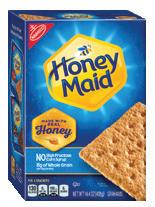




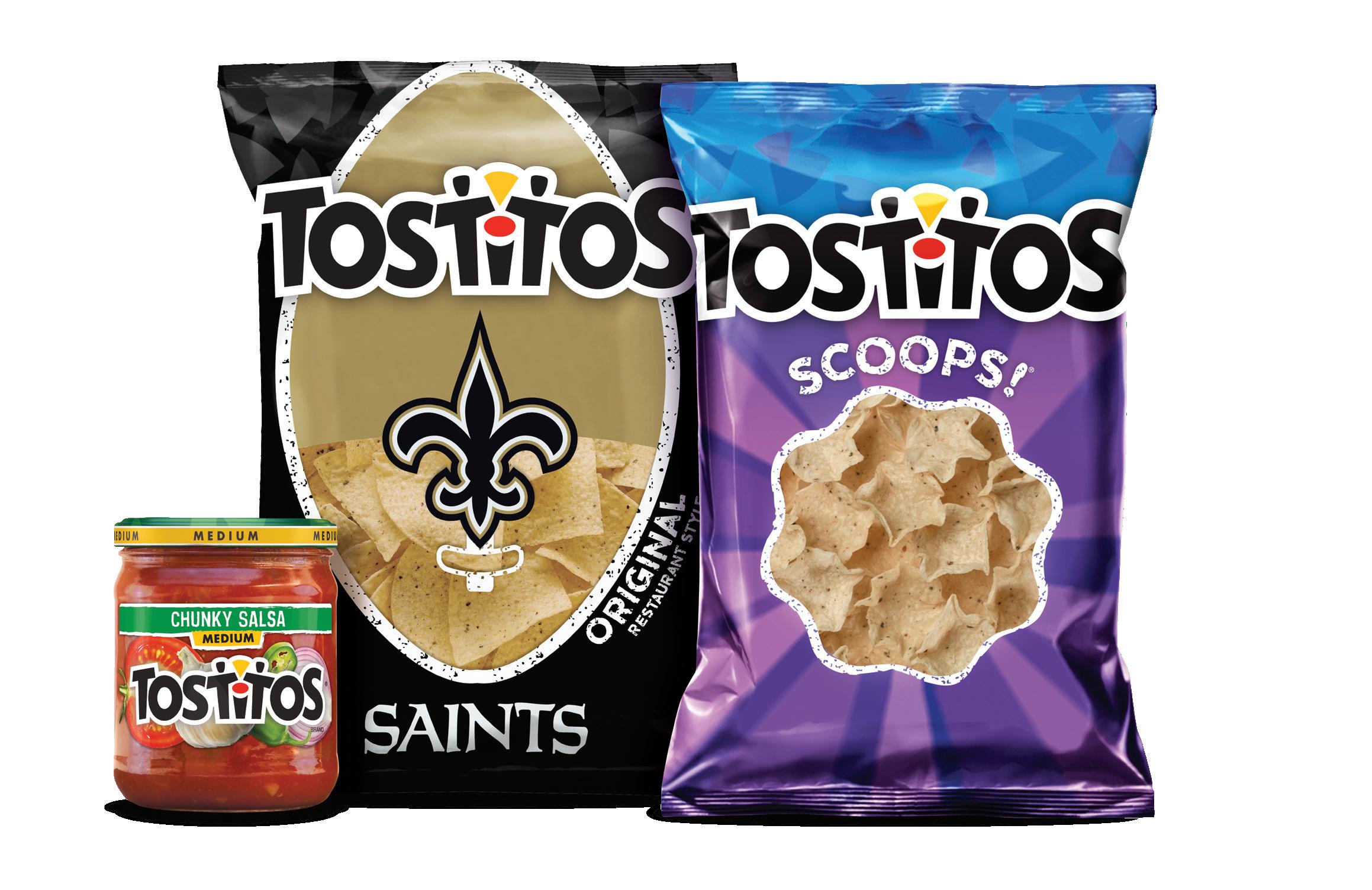

































by david w. brown

This year marks the 100th season of the National Football League — despite deserving to have been smitten from the Earth after its 99th, when referees blew the most obvious pass interference call in the history of the sport, if not the history of eyesight, during the NFC championship game between the New Orleans Saints and the usurper Los Angeles Rams.
A hundred years is a lot of ground to cover, especially for football, which has one of the richest and most dynamic histories of any sport played in America today. To learn more about the first century of the premier professional football league, I reached out to Jim Weathersby, the prolific author behind the website The Sports Historian (www.thesportshistorian.com), which chronicles every sport you’ve ever heard of, from 19th-century golf to today’s Little League. He certainly lived up to his reputation during our hour-long conversation. Professional football existed as a small, regional activity as early as the 1890s, he says, and grew out of college football. “College was king,” says Weathersby, and after players graduated, professional football was a good way to make a little extra money. The sport was limited to regional teams, with its strongest presence in Ohio. The Canton Bulldogs and the Massillon Tigers were early pre-NFL rival football teams; their fans were devoted and their players were serious about the sport. In those days, players wore virtually no padding, and are best recognized today by the now seemingly strange leather helmets seen in old films and photographs. Still, if you were to build a time machine and use it to watch these first professional football games, you would certainly recognize the game being played. (The same isn’t true, however, for the earliest college football games in the late 1860s and ’70s. Football was then still in its infancy, and college athletes in the Northeast played something more akin to rugby or soccer. The actual football looked a lot like a soccer ball or volleyball.)
Football as we know it was devised by a man named Walter Camp. A Yale player and then coach, Camp (while serving on rules committees for the nascent American sport) devised such things as the line of scrimmage, the snap, the safety and the offensive lineup still used today. He was a man of seemingly boundless energy, writing hundreds of stories about football for the top magazines in America, to say nothing of the 30 books he authored. Today he is recognized as the Father of American Football.
“By 1930, the game had evolved to what we see today,” says Weathersby. “You didn’t have the protection with the massive pads and the facemask — the equipment and the uniforms still had a ways to go — but the actual football itself was certainly oblong, and the game fairly close to what would be played even in the 21st century.” Throughout the 1930s, running plays were the order of the day.
What might startle you most about the early days of professional football are the players themselves. The speed and size of the professional football player pre-World War II are unrecognizable when compared to the gladiators on the field today. “With these guys, the linemen might be 180 pounds,” Weathersby explains. “If you’re lucky, he’s 200 pounds.” In comparison, linemen today are well over 300 pounds. Without modern equipment, it could get ugly out there. “Football was a vicious, tough game.”
Just after World War I, it occurred to those Ohio teams that it was time to get organized and solve three major issues plaguing the sport: player salaries, players moving from one team to the next as they chased the highest offer, and teams snagging players away from colleges. The year was 1920, and the solution they came up with was to form a league. They first called it the American Professional Football Conference. One month later, they changed that to the American Professional Football Association. And then in 1922, they rebranded one last time, and they became the National Football League.
The first few years of the NFL were spent in survival mode. No one had any idea how to make this thing work aside from, “Let’s play some football!” There was almost nothing national about the National Football League; it was made up mostly of teams in the Midwest, New York and Pennsylvania, and for 20 years, teams formed and folded like clockwork. There were no champion teams because there were no championship games. “League reps would get together the first of the year after a season and vote on who should be number one,” says Weathersby, “much like the way they used to do college football polls.”
To get things moving forward, the league cut away the weaker, less financially sound teams, and stabilized at 12. In 1925, the Chicago Bears signed a top-ranked college player named Red Grange and, suddenly, the media took notice of this “pro football” experiment. Grange was just an unbelievably popular player, and that Thanksgiving, he played his first game with the Bears at Wrigley Field versus the Chicago Cardinals, a crosstown team. Thirty-six thousand fans attended — the largest in NFL history at that time — and though the game ended 0-0, the league was suddenly on the map. The following month, Grange’s presence on the field saved a team called the New York Giants, which was tottering on bankruptcy until he came along, bringing 73,000 fans with him. (This time the Bears won.)
Things really picked up speed in the 1930s, which saw the first championship game (Bears vs. Giants in 1933), the first draft (1936) and the first locally televised game (Brooklyn Dodgers vs. the Philadelphia Eagles in 1939 on NBC). World War II killed the league’s momentum, but when soldiers returned from Europe and Japan, the NFL went mainstream. The Cleveland Rams moved to Los Angeles, San Francisco got a team (the 49ers), Cleveland got yet another team (the Browns), and Baltimore got the Colts. Meanwhile, the rules of the sport were changed to facilitate faster-paced, higherscoring games. (The T formation was a big part of this.) Audiences and thus revenue exploded, and fans started turning their attention from college ball to the pros.
Perhaps the seminal event in NFL history occurred in 1958, when the Baltimore Colts played the New York Giants in a championship game. It was the first championship game to be nationally televised, and it went into overtime, with the Colts prevailing in sudden death, 23-17. That audience and the watercooler conversation to follow ignited an interest that resulted in professional football overtaking baseball and college football in popularity by the mid ’60s. During this time, the league cashed in on its newfound popularity by managing the licensing of team logos for merchandise. This soon blossomed into a billion-dollar business, and finally put money in the pockets of team owners, who, for most of the NFL’s history, never turned much of a profit.
In 1966, the NFL merged with a rival professional football organization, the American Football League. The merger would take four years to complete, and in the interim, league owners decided to hold an annual championship game between the top AFL team and the top NFL team. The first such head-to-head was held in 1967, and was called the AFL-NFL World Championship Game. The Green Bay Packers played the Kansas City Chiefs. By 1969, this contest would be renamed the Super Bowl. (The 1967 contest was retroactively named Super Bowl I.)
by luke johnson
You know all the terms, but do you know their origins? Football language is fully ingrained in our daily vocabulary, and there are stories behind the verbiage. Sometimes they’re literal (you can probably figure out Pigskin), sometimes they’re borrowed, and sometimes they are the product of divine inspiration. Here are seven points, what most people would refer to as a …


While this is now synonymous with scoring plays in American football, the term initially came from rugby to describe when the ball literally touched down on the other side of the goal. In fact, in American football’s earliest form, players who crossed the goal line had to touch the ball down on the ground in order for the points to count. That rule was amended quickly, allowing for today’s players to commence their celebration as soon as they cross the goal line.
This term is credited to one of the most fearsome pass rushers of all time, Hall of Famer Deacon Jones, who made his indelible stamp on the game terrorizing quarterbacks in the 1960s for the Los Angeles Rams. And terror is exactly the kind of vibe he was looking for. The term sack is not meant to represent a bag, but is to recall the image of a conqueror sacking a city. Sacks became an official NFL statistic in 1982, eight years after Jones’ retirement.

The Hail Mary pass — a desperate heave toward the end zone, often from midfield or further, at the end of a half — has its professional roots with the Dallas Cowboys and quarterback Roger Staubach. After his toss that beat the Minnesota Vikings in the 1975 playoffs, Staubach, a Catholic, said, “I closed my eyes and said a Hail Mary.” But the spirit of the term really started at Notre Dame in the 1930s, where players used it to describe plays with a low probability of success.

Once the merger was complete, the NFL reorganized slightly, adding teams, and rebalancing and renaming its two erstwhile rivals — now as the American Football Conference and the National Football Conference. They would also keep the Super Bowl tradition alive. In 1970, Monday Night Football premiered on ABC, bringing in an entirely new audience with such technological innovations as slow motion and multiple camera angles, as well as celebrity guest stars and a lively trio of commentators: Frank Gifford, Howard Cosell and Don Meredith.
In case you are wondering, the New Orleans Saints joined the NFL in 1966; they played in Tulane Stadium and spent 40 years being beaten pretty soundly, with the occasional punctuation of a winning season. In 2009, however, football would be changed evermore for the better, when Drew Brees led the team to victory in Super Bowl XLIV. I pause here to note that, 10 years later, that felony failure to throw a flag on the Rams in the NFC championship game was the second instance in the same game (indeed, the same quarter) in which refs magically missed a pass interference call against the Rams (indeed, again, against Robey-Coleman). The restraint exhibited by the ghost of Tom Benson during both calls was
impressive enough; a lesser spirit would have reached a phantom arm from the field below and pulled the referees one by one beneath the Superdome and deep into the belly of the Earth.
If the first 100 years were about assembling a professional football league and setting it on sound financial footing, the next 20 years will likely be devoted to solving the problem of traumatic brain injury inflicted upon the game’s players. Football is a thrilling, violent sport where anything can happen because very large, very fast men have set themselves the task of moving a little brown ball from one side of a field to the other. But when you get very large, very fast men set in violent opposition, things can get ugly out there. In the mid 1990s, the NFL established a group called the Mild Traumatic Brain Injury Committee to look at the effects of concussions sustained over a professional football career.
“At first, they kind of downplayed it,” says Weathersby. “They argued that there wasn’t much connection between repeated hits to the head and concussions.” By the early 2000s, the evidence was essentially irrefutable, and the medical community picked up the flag

This word now evokes an idyllic image of the one person a team relies on for leadership, with a smiling face that lands on magazine covers and a rocket arm that delivers touchdowns. But, back when Walter Camp first came up with the term, it had a more straightforward meaning: The quarterback simply lined up halfway between the line of scrimmage and the halfback, and the halfback was between the line of scrimmage and the farthest person away from the ball, the fullback.

The origin of this phrase makes logical sense, but maybe not in the way you think: In the sport’s earliest days, the ball was made from an inflated animal bladder — sometimes, but not always, from a pig. Sometimes, to avoid the unpleasant act of having to blow up an animal bladder, they were filled with straw and rocks instead of air. Eventually, a leather covering was added. The balls used in football today are actually made from steer hide or vulcanized rubber.
This term is ripped straight from the history books. A blitz, in football parlance, is when a defense sends more than four rushers after the ball is snapped, with the rushers coming from the second line of the defense. The goal in a blitz is to quickly get to the quarterback or ball carrier — one might say, with lightning speed. Of course, this term is derived from the German war tactic “Blitzkrieg,” or lightning war, used in World War II.

and ran with it. In 2006, Roger Goodell became NFL commissioner, and began reshaping the sport into what we see today. Though he defended the league before Congress, he later implemented the NFL concussion protocol, whereby professional concussion spotters and neurologists on the field and in booths keep watch for players who look as though they have received concussive injuries. (The specialists can even speak directly — via wireless headsets — with referees, who can stop the game if a player appears to have symptoms of trauma.) Those players identified as being injured are immediately pulled for on-site evaluation by physicians. Some remain sidelined for the duration of the game. Some are medically evacuated to hospitals for further brain scans. Except for the team doctors, who are consulted, everyone involved is unaffiliated with the NFL.
Meanwhile, the NFL has implemented rule changes on tackling: A player can no longer lead with his helmet. And there is an everevolving effort to improve player equipment — though ironically, the helmets of today are only scarcely better for the concussion problem than the leather helmets of the 1920s. Because headon-head contact isn’t likely to result in skulls smashing open and brains spilling onto the field, players are essentially incentivized to

Standard defensive packages in football have four defensive backs on the field at once. When a fifth defensive back is added, it is called a “nickel” package — an obvious reference to the U.S. currency that is worth five cents. This defensive alignment was originally used by the Philadelphia Eagles in the 1960 NFL Championship game, though former Bears coach George Allen is credited with coming up with the name.
collide heedlessly with one another with more force than they might otherwise use. In short, the system isn’t perfect.
In the meantime, the most pressing change in store for the league involves its referees. In the 99th season, all you needed to be a referee in the NFL was a white hat, a striped shirt and a whistle. In its 100th, the league might consider adding eyeglasses to the list as well.
“ I preheat my Weber grill to 419 degrees (simply joining the two numbers of Kamara and Brees) — I tried putting Brees first but it was too damn hot), then cook my wings on indirect heat for 13 minutes a side (the Thomas method) and serve them up 94 minutes (exactly one Cam Jordan) before kickoff. Just in time for pregame!”
- D. HEBERT ; MY SAINTS SUPERSTITION


n o flag and we paid the penalt y
by Creg Stephenson
"How do I smell from here?” — unnamed referee in a probably fictitious Jerry Clower story, after marking off a 15-yard penalty when a coach told him, “You stink."
The penalty flag is largely unique to football among major American team sports, being as it is a colored handkerchief filled with sand or other pellet-like substances and thrown to the ground to indicate an infraction of varying severity.
In-game rules violations in baseball, basketball and hockey are indicated simply by verbal warnings, hand signals and/or the blowing of a whistle. Soccer has its yellow and red cards, but those are quickly transferred from the official’s breast pocket to his or her hand and then back into the pocket after being shown to the offending player.
Only in football is a penalty — be it offsides, holding or illegal use of the hands — marked by an official pulling and tossing the flag from his pocket in a fashion that’s simultaneously conspicuous and understated. It’s something between a javelin toss and a child playing with a toy parachute. And nothing can kill the buzz of celebratory football fans like a television or public address announcer intoning, “There’s a flag on the play…” after an apparent touchdown.
But where did the penalty flag come from, anyway? It all began in that noted cradle of football, Youngstown, Ohio.
According to a story published on the official website of Youngstown State University, the penalty flag’s inventor was Dwight “Dike” Beede, who coached at the school from 1937 to 1972. Beede introduced the penalty flag for an Oct. 17, 1941, game against Oklahoma City University, tired as he was of officials using various horns and whistles to indicate a penalty.
“I thought perhaps if there was some visual signal given which wouldn’t be heard
by the players it would be helpful,” Beede said in a 1972 interview with WKBN TV of Youngstown published by the Associated Press. “So, I thought that if a flag could be thrown, or a handkerchief, to designate that the play would go on until the whistle was blown on the part of the referee, which officially stopped the game.”
Beede tasked his wife, Irma, with sewing the first flags together out of cloth from his daughter’s old Halloween costume. He initially chose white fabric with red stripes, so that the penalty markers would stand out in the muddy grass on which football was usually played in those days.
The penalty flag was an immediate sensation, with official Jack McPhee saying, “It’s been a big help.” McPhee later used the flags at an Ohio State-Iowa game, where Big Ten commissioner John Griffith took note.
It’s unclear how quickly Beede’s innovation spread throughout the country (there was a war on, after all), but by the late 1940s they were common enough to be mentioned casually in newspaper stories. The American Football Coaches Association formally adopted the penalty flag in 1948; the NFL followed suit for a Green Bay Packers-Boston Yanks game at Fenway Park that September.

Officials still use their whistles to stop and start play, and often blow the whistle in conjunction with throwing the flag. (A noted exception to this was in the legendary 1967 “Ice Bowl” between the Packers and Dallas Cowboys, when a referee’s whistle froze to his lip, so officials used verbal commands to get players’ attention.)
College penalty flags remained red – Clower refers to the flag as a “red rag” in the comedy routine referenced in the opening of this story – until the 1970s. The NFL, which had used white penalty flags, switched to the bright yellow color we recognize today in 1965.
After initially being made from literal whole cloth, flags are now generally fashioned from nylon. And after everything from fishing sinkers to BBs were used to weigh down flags, it was determined that sand worked best, so most flags now contain a small bag of sand in one end.
As FootballZebras.com’s Mark Schultz notes in a 2015 article, officials are instructed to throw the flag near the spot of the foul, and generally at a player’s feet. But sometimes they get carried away.
In 2014, NFL back judge Todd Prukop threw his flag 31 yards, causing a sensation on social media and video sites. And in one of the more unfortunate instances in football history, Cleveland Browns offensive lineman Orlando Brown was temporarily blinded in one eye when official Jeff Triplette’s flag flew into his facemask and struck him during a 1999 game.
The penalty flag has become so ubiquitous that players who believe they have been fouled often try to help officials do their job by performing the “throw the flag” gesture, placing their hand at waist level and pulling it up quickly to “throw” an imaginary flag. (Note to players: don’t do that; referees, TV broadcasters and opposing fans hate that.)
NFL coaches got their own version of the penalty flag in 1999, with the introduction of the challenge flag. If a coach believes a play has been incorrectly ruled upon to the detriment of his team, he can challenge it by throwing a red flag onto the field (in effect calling a “penalty” on the officials and/or the opposing team).
Of course, the most infamous penalty flags are often the ones that never appear at all, such as the missed pass interference penalty that cost the New Orleans Saints a trip to the Super Bowl last year. Officials who don’t call obvious penalties are often said to have “swallowed their whistles,” but wouldn’t it be more accurate to say they “withheld their flags?”
So there’s the story of the penalty flag. We can thank Dike Beede’s moment of inspiration, along with his wife’s sewing skills.
I’ve spent this last week navigating the heartache and disappointment from the game. Some things within our control and some outside our control that caused us to fall short. So much of our motivation is to represent the

with determination and resiliency. We want to play for you, fight for you, and win for you.
The longer I play I realize that we truly are one heartbeat with our fans.
Our disappointment is your disappointment. We are inspired by one another to accomplish things far greater than what we could ever do on our own. Everything that has ever happened to this community, we have
galvanized and leaped forward every time. The frustration we feel now can be channeled in the same way. Pour that
into your families and communities. Inspire others with your focus & determination and positive outlook. This will make us stronger, this will bond us tighter, this will be a source for our success in the future. There is no place like New Orleans. There is no community like ours. No fans like the
I refuse to let this hold us down. I refuse to let this create any negativity or resentment. I embrace the challenge. So keep your chin up, hold your head high, puff your chest out because WE are the Who Dat Nation and WE will always
"Persevere" by
Alexis Dillon, Student at Loyola University
New Orleans, Department of Design
Oh, snap, he should have thrown that flag ...
Our oh-so-fabulous Bakery Manager Angela Billiot made this gator for us using our famous French bread dough, available at any Rouses Markets Bakery.
The refs in the Rams game sure could have used some "Gator Aid" last season.
Go behind the bread and learn how to make your own on our Instagram story @RousesMarkets.


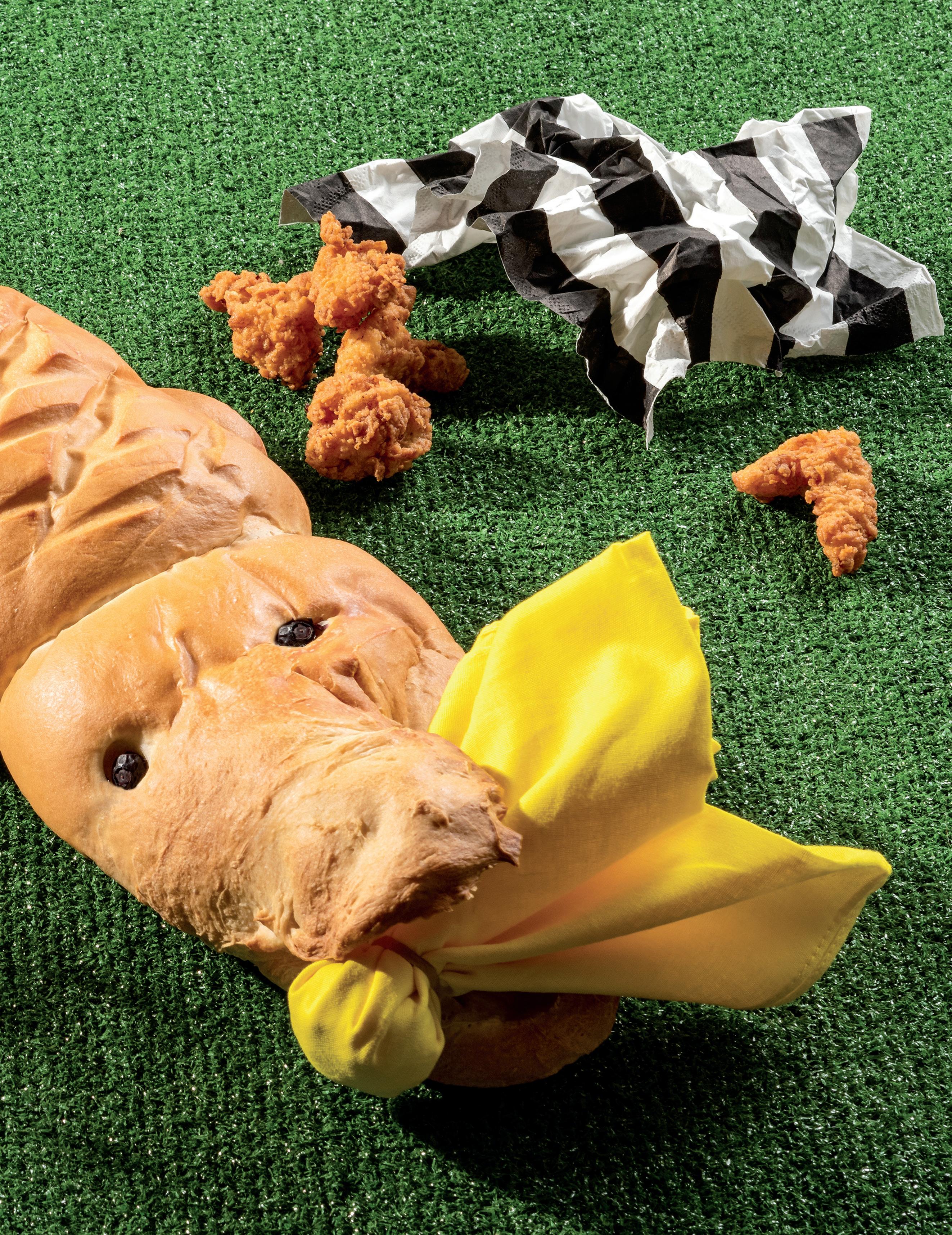
















From the tomato farms of Italy straight to your table, we bring the taste of homemade-style pasta sauce to the Botticelli line of products. Using 100% Italian tomatoes of the highest quality, we produce our pasta sauces from scratch in small batches, mixing in our special blend of spices to ensure a rich, homemade-style flavor.
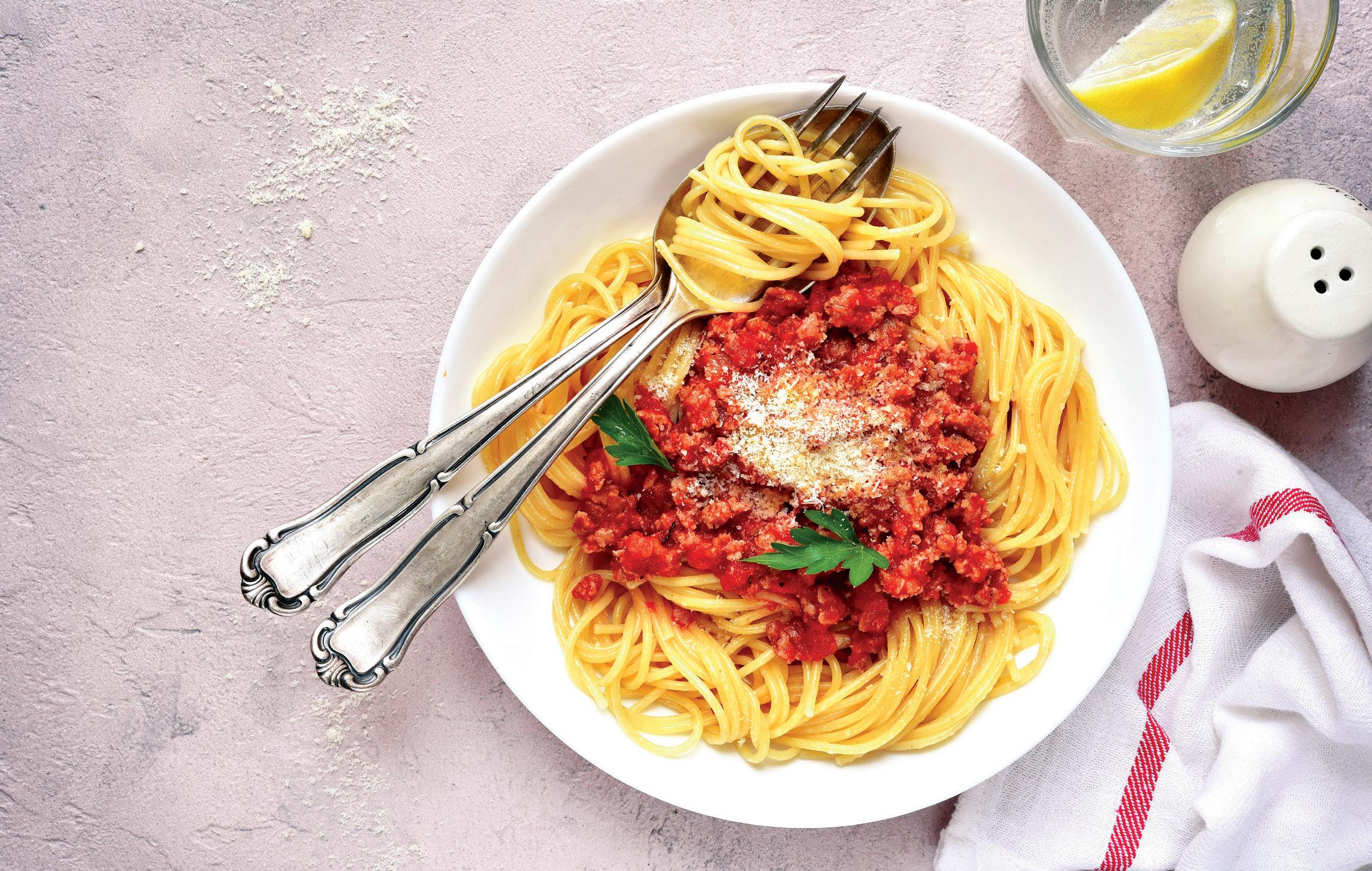





















by SARAH BAIRd
Make no mistake about it, the concept of “mindfulness” is everywhere these days. And whether you’ve decided to hop on the bandwagon or not, the notion — as a marketing tool and pop culture phenomenon — implores us to be present in every moment: not hurried or harried, but a chilled-out, Zen-filled vessel of calm who starts the day by listening to a meditation app and ends it by gratitude-journaling next to a salt lamp.
But such a narrow definition of self-care has never quite worked for me — and it might not be right for you, either. It’s high time we begin to recognize that mindfulness and “being in the moment” are more of an individualized, Choose Your Own Adventure -style journey than anything Gwyneth Paltrow is trying to sell us. So, sure, sometimes we might need a three-day yoga retreat to become a healthier, happier version of ourselves. But sometimes, we need to eat delivery pizza at 2 a.m. while watching Seinfeld reruns. And then there are those times when recharging our batteries means painting our faces, donning our lucky underwear, and screaming our lungs out as part of the heart-pumping energy that comes with a good ol’ fashioned sports rivalry.
In sports (and football, specifically), a good rivalry is an art form. It binds local communities together, rallying practically everyone around a shared, common goal of trouncing the long-hated other team. It’s passed down through generations as a kind of grudgeholding family tradition, and allows people to believe in something bigger than themselves: that these heroes of athleticism will bring bragging rights home for everyone to enjoy the boast-worthy spoils.
“This is a complicated world with serious problems…so it can feel silly and frivolous to get so wrapped up in sports rivalries,” writes the University of Texas’ Art Markman in a 2014 New York Times opinion piece. “But, taking part in rivalries has some real psychological benefits… On game day, fans get to have the full range of emotional experience including anxiety, joy, anger, excitement and disappointment. There are few opportunities in life that afford these extreme emotional experiences. And so the investment in the rivalry pays off in those unmatched moments of pure feeling.”

Falcons, 27-24. But it wasn’t the score that mattered that day, because something much larger was born: a blood-boiling, hardscrabble rivalry.
Both the Saints and Falcons were originally placed in the National Football Conference (NFC) West in 1970, then moved to the NFC South in 2002, which has ensured that the teams have played at least two games against each other each year since — allowing plenty of opportunities for both memorable moments and mudslinging.

And there are few fan bases who can sling mud better. The old adage “familiarity breeds contempt” is taken to its most venomous level where the Saints and Falcons are concerned, and fans on both sides aren’t afraid to get creative with their name-calling. Among the slurs hurled at the Atlanta Falcons by Saints fans, favorites include the “Failcons,” “Failcans” and “Failcants” — plus several that aren’t quite fit for print. Falcons fans love to hit back by calling New Orleans’ football finest “the Ain’ts” and the “Cain’ts.” There are also plenty (and I mean plenty) of chants, refrains and jokes with the singular aim of getting fans completely riled up. (A personal, cheesy favorite: How many Falcons fans does it take to change a light bulb? None! They are happy living in New Orleans’ shadow.)
And while there are plenty of rivalries that have gone down in the history books as legendary (Joe Frazier vs. Muhammad Ali, for instance, or in college basketball, Duke and the University of North Carolina), but for many professional football fans across the South, there’s no bigger modern rivalry than the New Orleans Saints and the Atlanta Falcons.
But what — exactly — makes these two teams such worthy, engaging rivals, year after year? Below are multiple tenets of what makes a rivalry truly riveting, and how the Saints vs. Falcons matchup continues to draw fans with vim and vitriol each season. (Oh, and Who Dat!)
Whether or not fans would ever admit it, the Saints and Falcons have quite similar origin stories. The Saints entered the National Football League (NFL) as an expansion team in 1967, just two years after their neighboring Deep South team, the Atlanta Falcons, who were also born as part of an expansion effort. They met for the first time on November 20, 1967, with the Saints just barely posting a win over the
A strong rivalry also means that there’s a bevy of historic moments that have been crystallized in the memories of loyal fans, who are more than happy to reminisce about them — play by play — at a moment’s notice. There’s Atlanta’s 62-7 blowout of the Saints at Tulane Stadium in 1973. There’s 2009 (the Saints’ Super Bowl win year), when Darren Sharper intercepted a pass from Matt Ryan to stave off a Falcons comeback and raise his team’s record to 13-0. And there’s the Falcon’s 1991 victory in the only playoff matchup between the two. The list goes on and on.
But then there are moments in the Saints-Falcons history that have been memorialized far beyond the collective consciousness. Without a doubt, the grandest example of this is the golden statue erected outside of the New Orleans Superdome in 2012 depicting Saints safety Steve Gleason as he blocked a punt by Falcons kicker Michael Koenen. (The punter depicted in the statute is generic because the Falcons, of course, wouldn’t allow their logo to be used.) This wasn’t just any punt block between rivals, though. The now-legendary event occurred during the Saints’ first game back in the Superdome after Hurricane Katrina, and has become symbolic of the team’s unwavering spirit and resilience. The statue’s official name is — what else? — “Rebirth.”

While Atlanta and New Orleans football fans have been duking it out for decades, few people outside of the region noticed for most of the teams’ tenure because both franchises were, well, a little lacking in the wins department.
“The Saints and the Falcons both were so bad for so long that I believe this is why their nasty rivalry never gets attention from the mainstream media,” writes Mike Kerns of Bleacher Report. “In fact, the futility was so bad that up until the Falcons’ Super Bowl run of 1998, both franchises had only managed to capture the division crown once each.”
Since the late 1990s, though, the teams have not only started beating each other, but become powerhouses on a national scale. Atlanta has two conference championships to New Orleans’ one — but the Saints have a Super Bowl ring. New Orleans has seven division championships to Atlanta’s six — but the Falcons have the all-time win streak in their rivalry against the Saints (10 games between 1995 and1999). The two teams are so historically wellmatched against one another that the all-time number of wins in the series is almost an even split between the two: 52 victories for the Falcons, and 48 for the Saints.
Without a doubt, these two teams go tit for tat.
Is a Falcons’ loss as satisfying as a Saints’ win for fans and vice versa? Not quite, but it’s pretty darn close.
No recent incident captures this more vividly than the Saints fans’ glee — I mean, absolute giddiness — at the Falcons blowing a 28-3 lead against the New England Patriots in the 2017 Super Bowl. Memes about the implosion were created instantaneously and circulated like wildfire on social media. The Saints pep band worked a “28-3” formation into their on-field performances, as did the coachshorts-wearing male dance troupe, the 610 Stompers. And the New Orleans-based company Dirty Coast attempted to buy a billboard outside of the Falcons’ new Atlanta stadium that trolled the team about their 28-3 loss.
But the finest example of basking in your rival team’s failings (and never, ever letting them forget it) came when someone paid a pilot to fly above the Superdome carrying a banner proclaiming, “28-3 MERRY XMAS” during the first Saints-Falcons game following the Atlanta team’s Super Bowl disaster. Petty? Yes. Hilarious? Definitely, yes.
Perhaps most important, a strong rivalry between teams is good at getting the whole community riled up. And along with the trash talk, hollering and superstitions on both sides, there’s plenty of culture on display: Rivalry game day is, without a doubt, its own special kind of celebration.
“Every year, bus caravans loaded with rowdy (and usually very inebriated) fans make the seven-hour trip between the two cities,” writes Len Pasquarelli for ESPN.com. “Unless you’ve attended a Falcons-Saints debauchery-filled afternoon, you'll just have to take my word for how much fun it really can be.”
For the Saints and Falcons, it’s also a larger clash between the very character of two extremely different Southern cities. With over 5.9 million people, Metro Atlanta is filled with the kind of skyscrapers and traffic-snarling sprawl that mark it as sweepingly metropolitan. New Orleans, on the other hand, is smaller and funkier — content to do its own thing down along the Gulf. Game day between these two rivals isn’t just about what happens on the field — it’s a true grudge match for pride of place and local identity.
Going into the 2019 season, the Saints and Falcons have clashed 100 times over the course of their respective careers, and have been pushing each other to grow, develop and achieve in ways that nonrivalry competitions just can’t. It’s not hard to imagine that, while in training sessions and practices, Saints players are fantasizing about picking off a pass from Falcons quarterback Matt Ryan, and the Falcons defense is running drill after drill in hopes of sacking Drew Brees.
The cities of New Orleans and Atlanta are assuredly gearing up, too — figuring out just how they’re going to clown around on one another in an innovative, memorable fashion this year as decades of history, rivalry and community pride come to a head.
If they’re looking for top-notch inspiration to stoke the rivalry fires, I’d point fans on both sides to a 2013 commercial for a local New Orleans bank starring Saints Head Coach Sean Payton. In the ad, the coach appears to be dining out at a hoity-toity, white-tablecloth restaurant (in gameday attire, of course). After the waiter asks Payton what he’d like to eat, the camera zooms in on him running his finger over a list of NFL-inspired dishes — and finally landing on a particularly cheeky one.
“I’ll have the roasted Falcon,” he deadpans to the waiter, then gives the camera a wry smirk.

“ Home games: We park in the same place; we go in the same Dome gate; we go in as soon as the Dome opens. I have a Bloody Mary before the game starts (sometimes I don’t feel like drinking one but I have to), and my husband has to eat the same thing at every half-time ( even if he wants something else). My husband has worn the same shirt to the games for at least 15 years (he still gets compliments on it �� , plu s h e wear s ou r dog’s “Saints” collar (from when he was a puppy) as a bracelet. And of course we sit in the same spots at home games and always have chili dogs. Guess our home game rituals are a little strict….”
- V. MEHRTENS ; MY SAINTS SUPERSTITION

(Makes 10 servings, or about 1 pound)
WHAT YOU WILL NEED:
3 tablespoons vegetable oil
1/2 pound pork sausage, removed from casings and crumbled
1 pound chicken livers, finely chopped
1 cup finely chopped yellow onion
¾ cup finely chopped green bell pepper
¼ cup finely chopped celery
2 teaspoons minced garlic
1/2 teaspoon chili powder
1 teaspoon salt
1 teaspoon ground black pepper
2 cups chicken stock
2 bay leaves
5 cups cooked rice
1/2 bunch green onions (white and green parts), chopped
3 tablespoons minced fresh parsley
HOW TO PREP:
In a large, heavy sauté pan or skillet, heat 2 tablespoons of the vegetable oil over medium-high heat. Add the chicken livers and sausage. Cook, stirring, until the meat is browned, about 6 minutes.
Add the remaining tablespoon of oil and the onion, bell pepper, celery, garlic, chili powder, salt and pepper. Cook, stirring, for 5 minutes.
Add the chicken stock and bay leaves, and scrape the bottom of the pan to loosen the fond (browned bits). Bring to a boil, then lower the heat and simmer for 5 minutes.
Add the rice and stir thoroughly. Cook until the rice is heated through, about 5 minutes. Remove from heat, and remove and discard the bay leaves.
WHAT YOU WILL NEED:
1 whole chicken, deboned
1 pound dirty rice
1/2 cup chopped onion
Butter
Cajun seasoning, to taste Cayenne pepper, to taste
White wine or chicken stock
1 tablespoon cornstarch
HOW TO PREP:
Preheat oven to 375°F
Stuff dirty rice mixture into the chicken and sew flaps of skin back together to re-form chicken shape.
Place chopped onion in the bottom drip pan of a 2-piece roasting pan. Place the chicken, breast-side up, on the top of the slotted roasting pan.
Place a small piece of butter under the skin of each chicken breast. Season chicken well with Cajun seasoning and cayenne pepper. Cover and place in preheated oven for about 45 minutes, then uncover and cook an additional 15 to 30 minutes.
Remove pan from oven. Deglaze the drip pan contents on a burner over medium heat with white wine or chicken stock, and reduce.
In a small bowl combine cornstarch with 3 tablespoons cold water and whisk until combined. Whisk the cornstarch slurry into the stock mixture and bring to a boil, allowing the sauce to thicken. If the sauce is too thin, add more cornstarch slurry. If it's too thick, add more water.
After chicken has rested, top with the gravy and serve with sides of smothered okra, tomatoes and butter beans, if desired.
Start with a 31/2- to 4-pound roasting chicken. Place the chicken on a flat surface, breast side up.
First remove the legs by making a deep incision at the crease where the thigh meets the body. Run the blade around the thigh until you reach the backbone. Pull back the leg to expose the joint. Slice through the center of the joint and remove the leg. Repeat with the other leg.
Next cut off the wings. Make a deep incision along both sides of the breastbone, starting at the hind end and continuing to the wishbone. Cut through the wishbone and run the blade along the breastbone all the way through the wing joint. Pull away the wing and cut through any remaining skin to release it. Run the blade under the breast meat while at the same time pulling it away with your free hand. Then, pop out the breast meat.
Trim excess fat and remove the small piece of wishbone.
“ For one, Mom is not allowed to watch. If she watches or listens to the game, they lose, so…. The other thing is my referee doll that I rip apart when there is a bad call. And Dad has to wear his Packers shirt, and we all wear our Black & Gold. Mind you, Dad loves the Saints and bleeds the Saints, but he has to wear the old Packers T-shirt. ”
- E. EARLY ; MY SAINTS SUPERSTITION


by SARAH BAIRD
When family-related tragedy, like the unexpected death of a parent, strikes a child at a young age, the road to a healthy, happy adolescence and future adult success becomes that much more difficult to navigate — mentally, emotionally and beyond.
For Son of a Saint founder Bivian “Sonny” Lee III, those struggles hit close to home. Lee’s father, Bivian Lee, Jr., was an NFL defensive back for the New Orleans Saints in the early 1970s who died tragically from an enlarged heart at age 36. “I grew up in New Orleans East. My father passed when I was three years old. He died in front of me — he took his last breath in front of me. It’s impactful for me just remembering that. Also, I grew up with a lot of women in my family, but not many males at all.”
The lasting influence of his father’s death at such a young age eventually led Lee to dedicate his life to young men in similar situations. In 2011, he founded Son of a Saint: a mentorship, emotional support and life skills program for young boys in New Orleans who are fatherless due to death, abandonment or incarceration.
It’s often said that the best kinds of leaders and positive role models have a personal connection to, and deep understanding of, the communities and issues they’re trying to tackle. There is, perhaps, no better example of this than Lee.
“Growing up, I had a very loving environment. But I didn’t go fishing. I didn’t know what the tools were at Home Depot, so I didn’t build things. I didn’t do some of those guy things. Even when it came to my confidence; there was a lack of confidence, I think, on my part. I also had some challenges in middle school navigating anger.”
















After graduating from St. Augustine High School and the University of New Orleans, Lee worked for the New Orleans Zephyrs and, eventually, as chief aide to the late owner of the New Orleans Saints, Tom Benson. “My experiences traveling with him, it was everything you can imagine: first class, private jets, yachts — everything. It was Mr. and Mrs. Benson and me, 12 to 16 hours a day. When we would travel it would be for months at a time if we were going somewhere. I was trusted. I really learned a lot through just people-watching more than anything, but obviously communicating, too — interacting with people.”




Eventually, though, a story in the newspaper inspired him to take a gigantic leap of faith. “I saw [in the newspaper] that there had been a murder: One boy murdered another boy. And the thing that boy and I had in common is that we didn’t have our fathers. So, I said, ‘How can I give back? What was the difference between his life and my life?’




Obviously, the trauma of my dad dying in front of me could have steered me the wrong way, but my family kept me on the right track. I thought, ‘Well, why don’t I just give everything my mom gave to me, to others? Why don’t I just create that for boys on the preventive side?’”
Son of a Saint selects a group of boys ages 10-13 to join the program every year, with each Son of a Saint mentee official remaining in the program until he is 18. “A lot of people focus on kids after they commit crimes and after they do bad things. I was like, well, if [we focused on them] before — when they’re 10 or so, before they get in the system — we could prevent that. It makes sense,” he says. “And for the results that we wanted to have, our program had to be long-term. It had to be very intentional. Really, once they’re in [Son of a Saint] at 10, it’s like a family, so you never really leave the family.”
Lee found his first group of Son of a Saint mentees through coaches and school connections, and quickly immersed himself in doing everything in his power to better their lives. “We just started plugging away on activities with the boys. I was pretty much doing


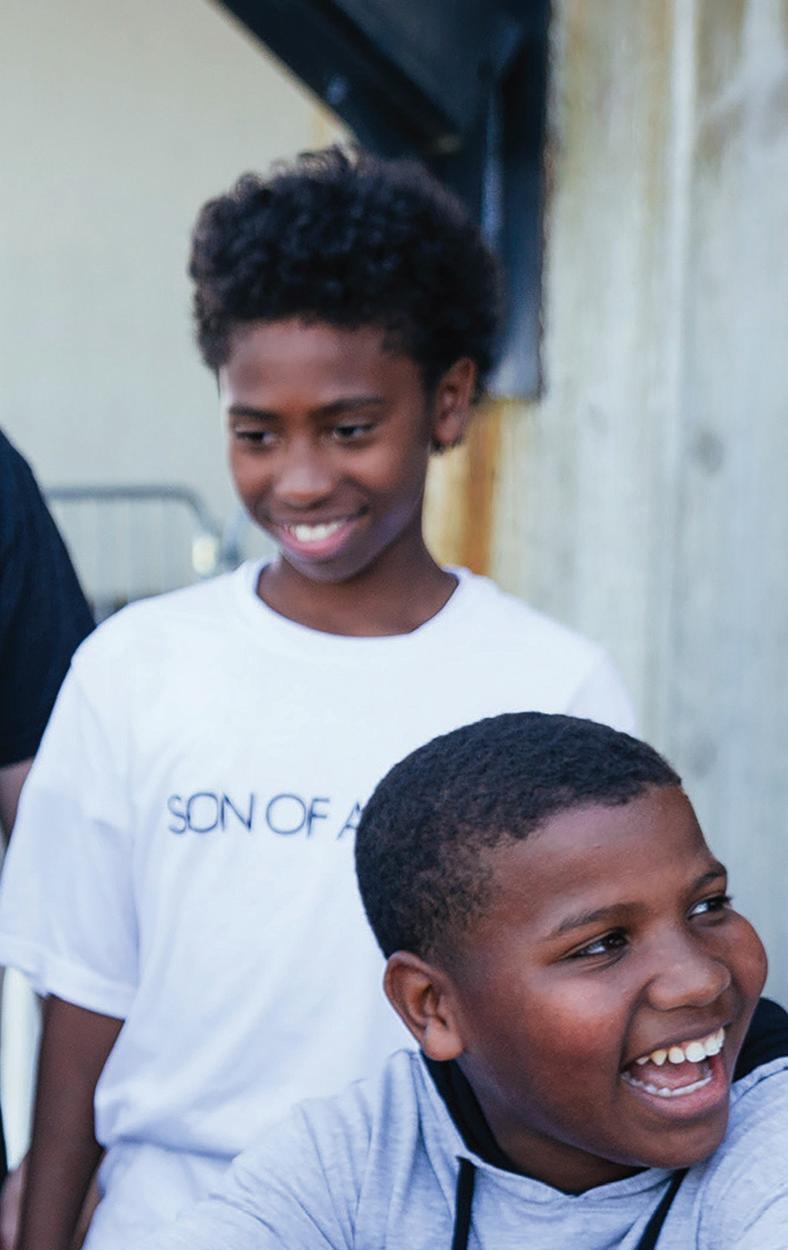













everything that I could outside of just mentorship, even taking them to and from places. I was picking boys up. I was going to their schools and talking to their teachers. If there was a conduct issue, I was there. I was there if they needed a pair of shoes or book backpack or something for school. I was there if they needed mental health services — I tried to coordinate that with them. For all of those things, I was just doing it. And we slowly started to see success.”




















Son of a Saint’s long-term, holistic approach to mentorship is not only unique among mentorship programs in New Orleans, but across the nation. Each Son of a Saint mentee participates in at least one recreational activity a week, and is required to complete at least eight hours of community service per month. What’s more, there are more than 20 group mentoring classes offered monthly, along with tutoring, behavioral health counseling and tuition assistance for those in need of such services.






Lee ran Son of a Saint as a volunteer organization for the first three years, coordinating mentors, mentees and everything in between practically single-handedly. “It was a lot of work in the beginning, but I knew it was special,” he says with great modesty. When he was finally able to make it his full-time job, the organization took off exponentially: Lee hired his first full-time staff member in 2016, and now nine employees — including a mental health specialist, case worker and education coordinator — are working to better the lives of New Orleans’ fatherless boys.



Son of a Saint prides itself on creating lasting, meaningful relationships among everyone in the program, from strong connections between mentors and mentees, to the bond developed between the boys themselves. “I participated in [a different mentoring program] while I was working with the Saints. The people from the program came to my house, and they asked me some questions that were just on paper. Then they immediately connected me with a boy who lived across town, but he had no interest in sports. I said, ‘Hey, let’s go to the Saints game! Let’s go meet the players!’ But he had no interest. And I was like, ‘Why would they just pair me with a boy on paper?’ That didn’t really work.”
This experience stuck with Lee, who makes sure that his mentormentee relationships aren’t built on an arbitrary, on-paper checklist, but instead on spending time together in real life. “For us, we have a mentor ‘in training’ for three months. Mentors come in and come to our group activities. We don’t just pair them with a boy. We let those relationships happen organically, as opposed to just kind of, ‘Here’s a boy! Bye!’ The whole program has really been therapy for me.”






And out of all the activities — from sports, to horseback riding, to fishing, yoga, music, chess and the arts — offered to the boys, Lee says that traveling and community service are what make for the most talked-about experiences. “If you were to ask 100 boys — we have 100 boys — if you were to ask all of them what’s the most memorable thing, it’s travel. Whether it’s going to the beach, or New York City, or going to camp. It’s usually a travel experience.”

Lee, of course, also continues to lead by example. He recently went fishing with a board member who he considers a mentor for the first time. “It goes to show you, like I’m almost 38 now, and I have my mentors. I have people that I look up to,” he laughs. “It was a thrill. I’ve been trying to catch that fish for 35 years.”
“With these boys, I think the biggest part of this is, because I’ve gone through it as an adolescent, it’s almost like a proven method. With Son of a Saint, it was like, ‘I know these things are going to work, because I’m a product of it, and I know what worked for me. I know what these boys are looking for and what they need.’ To this day, that’s actually been true.”
Join us in supporting Son of A Saint. Visit sonofasaint.org to donate online and purchase tickets to their November 1st Gala at the Ritz Carlton New Orleans.

N O W A V A I L A B L E !
Aronia berries have 4x the antioxidants of blueberries






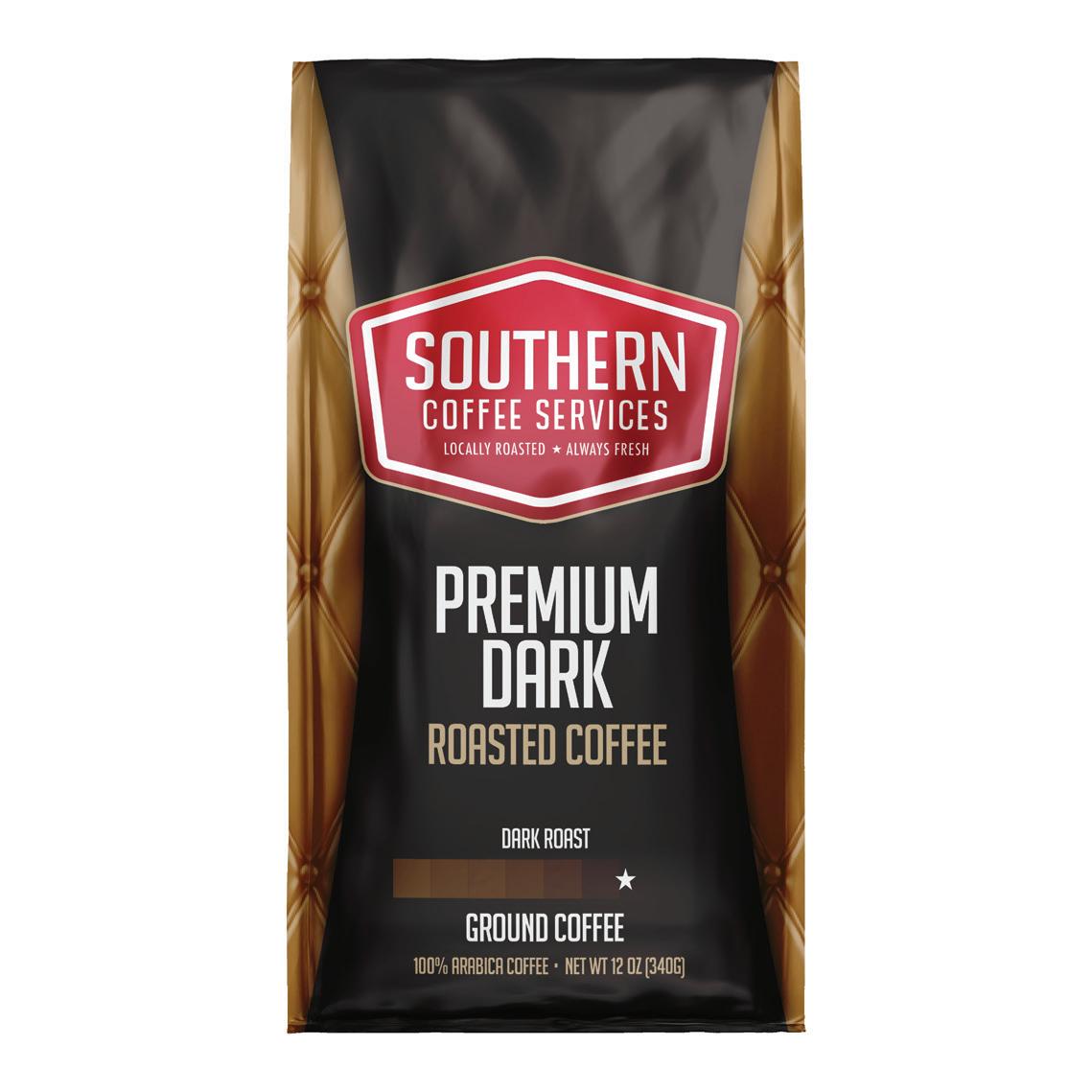






















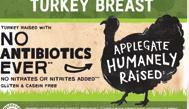



























Crafting authentic hickory-smoked sausage since 1976




























by justin nystrom
At five o’clock sharp, a mechanical reverberation rumbled under the passengers’ feet as the engineer eased forward the throttle on the locomotive’s great diesel turbines. Soon, with a gentle groan, a thousand tons of steel painted in the orange and brown livery of the Illinois Central inched slowly ahead, commencing a rhythmic metallic cadence that increased steadily as the Union Passenger Terminal receded and the early evening lights of New Orleans flickered on. Minutes later, the train paused for a moment to collect ticket holders waiting on the platform in the damp evening by the Fontainebleau Hotel, but was soon on its way towards Baton Rouge for an 8 pm kickoff against rival Ole Miss and a Halloween game that everyone aboard would talk about for decades to come.
Much has changed about the way we get to the game in the 60 years that have elapsed since that October night in 1959, when Billy Cannon made his famous Heisman-cementing touchdown run during LSU’s muddy 7-3 victory over Mississippi. Interstate 10 between New Orleans and Baton Rouge was still incomplete, leaving Airline Highway as the only viable thoroughfare for sitting helplessly in gameday traffic. For LSU fans living in the Crescent City, by far the most carefree and elegant solution was to board one of the “Football Specials” that served every home game.
The scene on board evoked the smokier, dressier 1950s; a sequence of freeze frames burned in the historical imagination like those conjured by Matthew Weiner for the hit television drama Mad Men. An Illinois Central cocktail menu from 1956 underscores this impression with its old-school offerings. Neither tinctures, nor eyedroppers, nor handlebar-mustachioed men answering to the appellation “mixologist” seem to have been aboard. Instead, there was a total of three cocktails; the martini, Manhattan and old fashioned headed the list, joined by “mixed drinks” including the Collins mix triplets (vodka, rum and Tom), gin and tonic, bourbon three ways (bonded, straight or blended), Scotch and Canadian whisky — all served to the customer in miniature single-serve bottles we associate today with air travel, and all costing between 70 cents and a dollar. Fifteen cents more bought a highball filled with soda water and ice cubes. “Refreshments available,” noted an advertisement, “both to and from the game.”
The drink menu contained other options that so often rest uneasily on one’s constitution when consumed in volume, particularly when paired with motion, that they give today’s reader pause. These included a 70-cent split of frighteningly domestic sauternes, as well as sugary brandies like Benedictine, plus crème de menthe. Perhaps this is why, prominently displayed just below lemonade and above “an assortment of fine cigars,” one found a selection of remedies including a 25-cent box of aspirin, single doses of Alka-Seltzer and, for more serious ailments, Bromo Seltzer. The latter enjoyed a particularly strong reputation as a hangover cure, a status due in no small part to the presence of its namesake ingredient, sodium bromide
— part of the family of bromide tranquilizers the USDA banned in 1975 for their toxicity. (A reformulated Bromo Seltzer is still on the market today.) The real danger came most often in the form of overindulgence. As one rider of the period recalled, “In those days Early Times and Coke was the drink of choice. No wonder everyone got sick!”
Football Special trains had been around since the invention of the game itself and even featured in LSU’s inaugural season in 1893. In what may have been the first Football Special to ever run in the state, a group called Cadets of the Ole War Skule took a reserved train to New Orleans for a contest against Tulane University at a time when football was a brand-new sensation in Louisiana. The teams played at the Crescent City Baseball Park, which stood across the New Basin Canal from Metairie Cemetery on what was then the verdant rim of the city’s human inhabitation. Tulane won 34-0, but the game was a bit different back then, with touchdowns worth only four points and field goals worth two. Indeed, a lot of what we take for granted about football remained in a formative phase for the next 25 years. The cadets rumbled home on the Illinois Central, resolved to perform better in the future. In 1914, a Southern Pacific Special pulled into Opelousas carrying a team from the St. Charles College, once a Jesuit school in Grand Coteau. The college’s brass band led the team to Comeau Park for the first-ever football game to be played in the town.
The annual “Battle of the Rag” between Tulane and LSU stood as one of the longer-running traditions in college football until it ended in 2009. Special trains for this rivalry were popular both in New Orleans and Baton Rouge, with the destination alternating each year. An aerial photograph of LSU’s campus from 1931 shows a spur and platform due south of the stadium where today the Military Science Building stands. This platform had vanished by the 1950s, requiring fans to get off the train a little further away and walk across a field to Tiger Stadium. One passenger remembered the ride to the 1961 game as featuring the “usual booze and cards,” but the ride back seemed to take “much longer” after Tulane’s 62-0 drubbing.

So many people rode the Football Special out of New Orleans for the Tulane-LSU game that it possibly even had implications for the 1965 mayoral race. At least that is how Jimmy Fitzmorris saw it. “People don’t realize the importance of the individual vote,” he noted. “On that particular day, Tulane was playing LSU in Baton Rouge, and there were 10 trains that were taking people to Baton Rouge. Ten trains. Figure...1,500, 2,000 people on these trains.” Fitzmorris, who considered the Uptown Tulane fans to be the core of his base,


lost to Vic Schiro by a mere 256 votes. The irony was that Fitzmorris had been a railroad executive before entering politics.
Unlike the relatively short hop between New Orleans and Baton Rouge, the Football Specials that carried teams and their fans to the stadiums of distant opponents took on characteristics of an odyssey not suited to the meek, and highlight the stark differences — between that era and our own — of comparatively inexpensive and convenient air travel. In 1926, a Missouri Pacific Special left its Annunciation Street depot in New Orleans at lunchtime on a Thursday with the
Tulane team and its fans bound for “the most important game of the season” against Mizzou. For $30.87, or roughly $450 in 2019 dollars, passengers rode 24 hours to St. Louis, where they spent the night aboard their Pullman sleeper cars and then headed further yet on Saturday morning to Columbia, then spent all day in the stadium. After the game, the Special pulled out at 7pm and took close to 30 hours to return home by Sunday night.
More bearable in duration was the Tulane Special for the Ole Miss game in 1951, which left New Orleans late on Friday night and arrived in Oxford at 8:30 the next morning. The train returned to the city, traveling through the night after the game on Saturday for an early 7am arrival, its passengers consoled after Tulane’s 25-6 loss that year by a large supply of hot coffee (and perhaps in some critical cases, a Bromo Seltzer). Without question, those travelers who forked over $42 for the Pullman sleeper car when buying their tickets down at the D.H. Holmes travel department enjoyed more comfort than those who saved $10 by riding coach, but all passengers received three meals a day in the diner car in addition to a ticket to the game. Visitors to Oxford today can retrace the steps of fans who arrived by train because the old railroad depot, once served by Illinois Central, has been preserved by the university as an attractive special events space.
Alcohol played such a critical role on Football Specials that one could be fooled into thinking that its service on these longer routes was a straightforward matter. Not so across the Southeast, where a patchwork of liquor laws ranging from the arcane to the arbitrary pivoted upon the crucial distinction of the train having crossed state lines. In Alabama, passengers might have enjoyed the full cocktail menu except on Sundays, or before 6pm on Election Day, or between 2am and 8am, but once the train passed into freewheeling Florida, restrictions against alcohol sales melted away — save for on Sunday, but only when the train happened to be in the station. Not surprisingly, Louisiana stood as a model of

liberality with the only prohibition falling on Election Day, a stipulation that restricted the putative voters in the Fitzmorris-Schiro race to beer only while the polls were open. Tennessee and Kentucky were a desert by comparison, allowing only beer and not on Sunday. But few surpassed Iowa’s vigilance against excessive joy, which limited sales to “near beer” only — and not even that on Sunday.
The food served aboard a train was perhaps even more important than the booze, particularly on the longer hauls when passengers found themselves captive. Chefs labored over tightly packed galleys of gleaming, stainless steel counters, burners and ovens, turning out three meals a day for hundreds of passengers who could order from a surprisingly broad selection of menu items. They accomplished this feat without microwaves or the modern wholesale food supply chain, one that today yields almost any dish or component imaginable in pre-made, heat-and-serve freezer bags. An Illinois Central menu from the early 1960s featured five unique table d’hôte options for dinner including fresh fried fish, roast turkey, sirloin steak, smoked ham or breaded veal cutlet. And this was far less elaborate than what travelers found on dining car menus earlier in the century. Passengers ate from custom, silverplated
china that sat on white tablecloths and enjoyed a degree of style and service all but unattainable on even the most luxurious first-class airplanes today. This pleasantness came at a price, of course, with dinners costing roughly the modern equivalent of around $20.
Not every Football Special train was soaked in alcohol or featured deluxe service, though. Universities often sponsored student trips for special games. Among the passengers aboard such trains one found the team, marching band and the cheerleaders. When the University of Southwestern Louisiana (today’s University of Louisiana Lafayette) headed to Mobile on the Southern Pacific to play Spring Hill College, they even stopped in New Orleans, where the band staged a small parade down Canal Street. Photos taken at the time depict the excited students making the best of their long ride in coach seats. At LSU, the vaguely Orwellian-sounding “Morale Commission” sold as many as 600 seats over the course of the summer for a big fall game, much like it did in 1959 when the Kansas City Southern carried students and faculty to a contest against Baylor being hosted in Shreveport. Coffee and donuts greeted arriving passengers who later received a box lunch on the way to the event. The $15 ticket not only included
admission to the game, but also furnished a college memory most fondly recall decades later.
It is sometimes hard to believe that we are today as far removed in time from the passengers who rode the Illinois Central to see Billy Cannon as those cadets who in 1893 rode to New Orleans for the first LSU game against Tulane. Football itself has changed considerably, and it remains to be seen how the game and the way we get there will change in another 60 years. Looking back, there is a temptation to quote Arlo Guthrie or Willie Nelson and lament our “disappearing railroad blues,” but our age for better or worse is a different one, far removed from the human mechanics, social infrastructure and political reasonings of domestic rail travel. Yet there was something to be said for joining 500 compatriots on a train trip to cheer on your team, void of the traffic gridlock and drunk driving; maybe the experience would just bring us all a little closer together.

























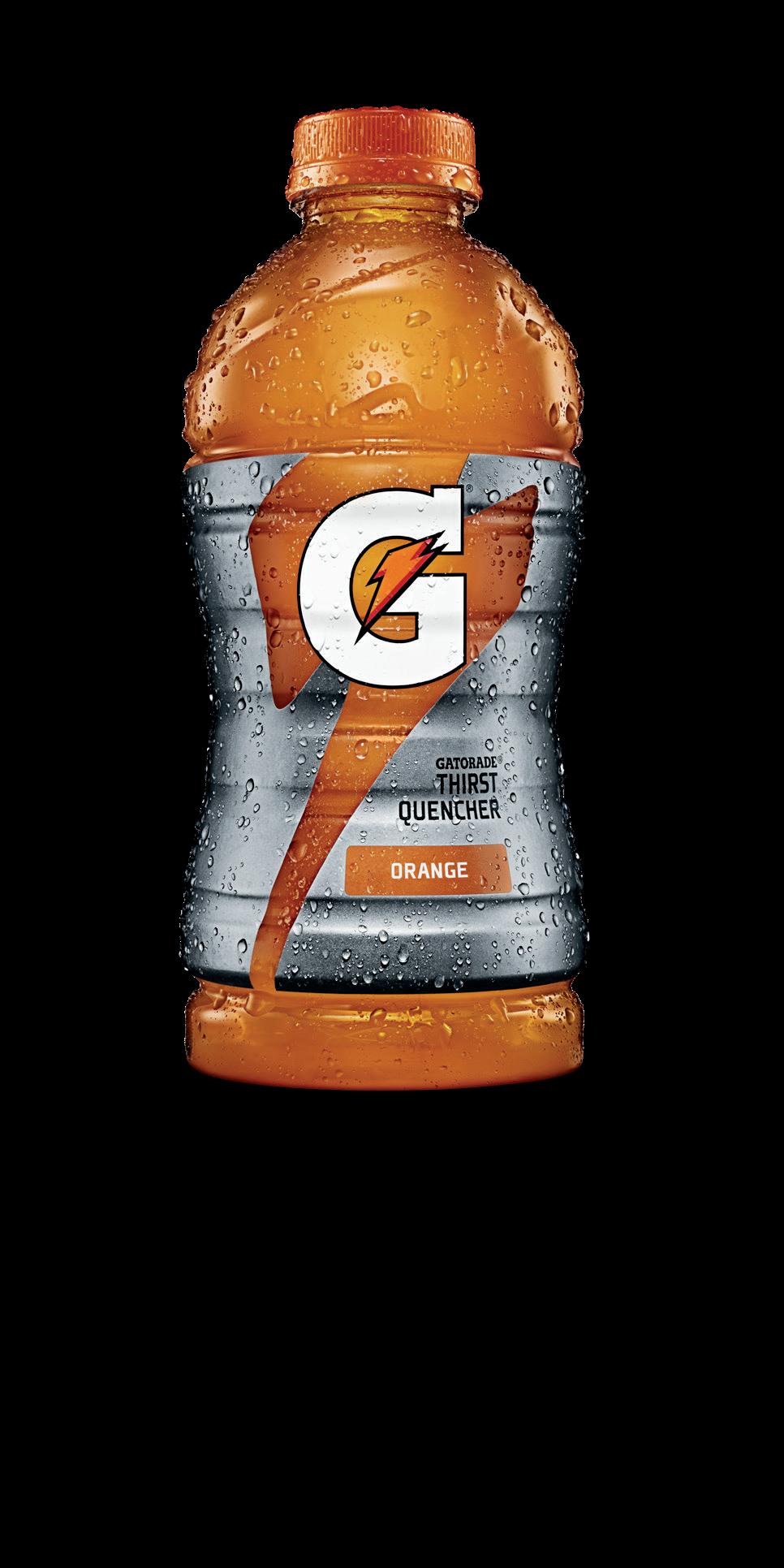


















































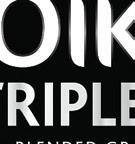



































by david w. brown
Tiger Stadium used to be a college dorm. That’s a pretty sweet piece of trivia, but the story behind the greatest dormitory in the history of higher learning — and the effect it had on college football across the country — is even more interesting than that. To learn more about the history of Death Valley, I reached out to Chad Seifried, a professor of kinesiology and sports management at Louisiana State University. He says that the story, growth and evolution of Tiger Stadium reflect the city that calls it home.
“The stadium sets up a convenient meeting place for various social groups who can come together, interact with each other, celebrate and engage in conversation,” says Dr. Seifried. “Over time, it has become a bigger and bigger building. It represents a growing community, a growing state, a more modern state, if you will.”
The stadium first opened in 1924. Before then, the Tigers played football at State Field in Downtown Baton Rouge, where LSU had a campus. Though today Tiger Stadium holds 102,321 people — that’s about 25,000 more people than the Superdome can hold — it wasn’t always that big. Not even close. When first built, Tiger Stadium held a whopping 12,000 people. (For comparison, that’s barely twice more than my high school football stadium. Go Spartans!) At the time, LSU wasn’t trying to dominate football in the Southeastern Conference (mostly because the SEC didn’t yet exist). Rather, the school was trying to compete with Tulane, which was the dominant football team in the state then.
in the United States. The idea was to build an arena to represent the institution, which would in turn work as a sort of advertisement, building institutional brand awareness and attracting alumni dollars. A stadium would recruit donors not just for the football facility, but for other campus buildings and student service programs — scholarships, foundations, fellowships and the like. It was
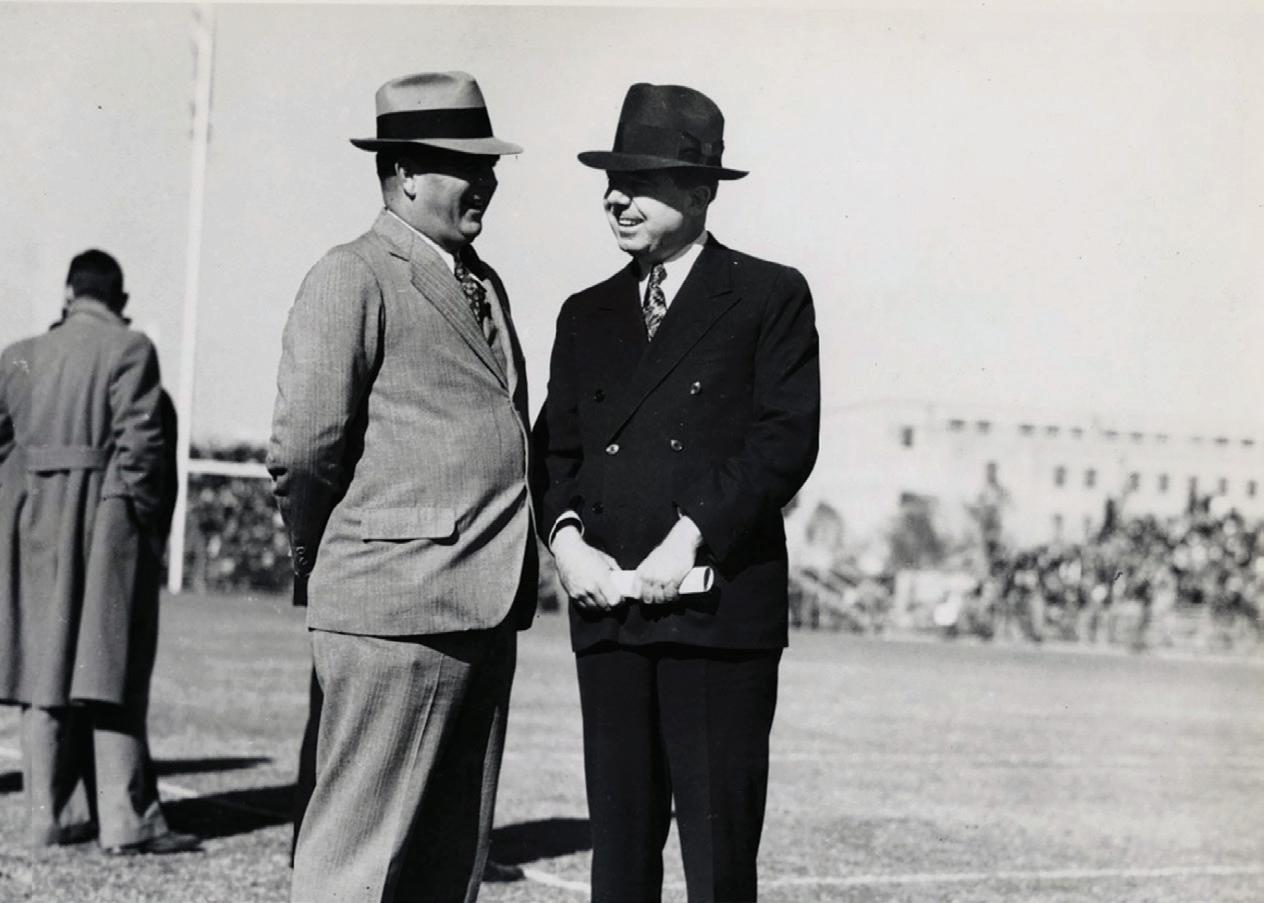
There is a misconception out there that LSU spends all of its money on Tiger Stadium. In fact, tickets and private donors foot those bills, and football has historically infused the wider university with cash. (The failure of the state to support higher education is a different issue, of course.) The alumni model of football fundraising was pioneered by Harvard University in 1903, when it built the first proper stadium
always bigger than football: A permanent stadium meant a university was legitimate and would be around forever, a sort of Rome in miniature. The idea worked, and within 20 years, the Harvard model had spread to nine New England universities. By the end of the 1920s, there were 49 schools in the U.S. with permanent football stadiums.
For context, it’s important to remember that in those days, college football was king, and professional football was essentially nonexistent. The NFL wouldn’t play its first
season until 1920, and even then, there were no championship games or nationally televised events (or national television at all, for that matter). And while the Midwest and northeastern United States cultivated what would become the National Football League, the South, by and large, was late to that party. Professional teams didn’t arrive here until the 1960s, which is why the region’s college football culture remains so dominant in sports today. Culturally, the Saints — even having won a Super Bowl (and having recently had an NFC championship stolen from them) — still command only a fraction of the eyeballs and emotion on game day that LSU attracts. This isn’t a reflection on the New Orleans team; it’s just that college ball has had an extra 50 years to cultivate personal investment, familial bonds and generational solidarity. And tailgating is just as important an aspect of an LSU football game as the game itself. The tens of thousands of tailgaters are as important, in many ways, as the players themselves. The two events are inseparable.
The blessed union of dormitory and stadium came about because of money: Student housing had it, and college football didn’t. In 1928, Huey Long was elected governor of Louisiana, and LSU was part of his plan to build a legacy. He wanted the university to have a world-class medical school, new and renovated buildings, a new baseball field and an improvement to the football field. He

associated himself closely with LSU and, by and large, when Long wanted something, he got it (though it often took creative financing to do so). When he couldn’t get money for campus construction, for example, he had the state buy the old Downtown LSU campus and use it to build a new State Capitol. Today, that building stands atop the old State Field.
An enlarged Tiger Stadium proved a greater challenge. Enter Thomas “Skipper” Heard, who was the new graduate manager of LSU athletics. Heard learned that, thanks to Long’s financial efforts, LSU had come into $250,000 to build new dormitories. Well, said Heard, couldn’t you build those dorms anywhere? Like, oh I don’t know, on the east and west sides of the football field? Couldn’t you build them right up to the edge of the field? Then you could just build seating on top of the new buildings!
Well, Long heard this idea, loved it and leaned hard into President Smith of LSU to make it happen. Smith soon acceded to the governor’s request.
“Long was an avid sports fan,” says Dr. Seifried. “You can see that not just in his interaction with the LSU football team and his efforts to help expand the stadium, but also in the way he would make road trips
to follow the team.” Long, he says, was a great advocate for the institution overall — not just athletically, but also academically. “He thought of LSU as a vehicle for his own personal brand, if you will, and so was a great promoter of the institution and its advancements, seeing improvements through not only while he was governor, but also senator.”
For Long, the idea of improving Tiger Stadium and drawing larger crowds for bigger and bigger contests meant more fuel for his political aspirations. If he could make things happen in Baton Rouge as governor of Louisiana, the thinking went, maybe he could make things happen nationally as president of the United States. It was no secret that Long wanted to run the country — and that once he ran, he expected to win. (Another of Long’s construction projects was a better Governor’s Mansion, which he wanted modeled after the White House. It was rumored he said that when he was elected president, he wanted to know where all the light switches were.)
The east dorms of Tiger Stadium were built in 1932, and the west in 1935. They were five stories high and housed 1,500 students. In the process, they increased stadium seating capacity to 22,000. “The
dorms that we’re talking about weren’t anything like what you see today,” says Dr. Seifried. “I mean, they were just regular dorm rooms, you know; outlets, closets, lights and that’s pretty much it. They were pretty small as far as amenities go.”
Because of the unique underlying architecture of the stadium dorms, the lower bowl of Tiger Stadium has a steepness that makes seating more intimate while also facilitating some fairly intense acoustics. Yes, the dorms are the structural reason why Death Valley is so insanely loud.
Just as Harvard’s idea for a sports stadium (and how to fund it) transformed college football, so too did LSU’s innovative idea for stadium expansion. “The dorms at the time were fairly revolutionary,” Seifried explains. “A lot of people followed the LSU example. College football-playing institutions frequently referenced LSU as a model for their own cities, and followed suit, building dorms in their football stadiums.” University of Tennessee is one such notable school that took LSU’s lead. Arkansas considered it, as did Texas Christian University. Even those universities that ultimately decided against it still used LSU to drive the discussion on how to think more creatively and urgently about stadium improvements.

For LSU students, there was a level of prestige that came with living in the stadium dorms. Those who lived there quite obviously had a campus living experience that was unique relative to other students on other campuses across the country. And just as LSU football game day is a focal point of Baton Rouge society, so too is the stadium for those students who once called it home. Alumni brought that experience with them after they graduated, and the investment paid dividends by way of donations and goodwill.
Dormitories weren’t the only Tiger Stadium innovation in the 1930s. If Tulane helped motivate LSU to build the stadium in the first place, scheduling conflicts with that school’s football games would be the primary driver for outdoor lighting. Nighttime sporting events were all but unheard of at the time, but LSU (following Loyola’s lead) erected towers of lights 50 feet high on the east and west sides of the stadium. The lights were designed specially to illuminate the field while remaining sufficiently diffuse so as not to annoy spectators. The mid ’30s also saw the installation of an electronic scoreboard, which was just about the height of sports technology at the time, allowing such information as time, quarter, lineups, penalties, ball position, downs and yardage to be posted for all to see.
In 1936, with the completion of the dorm seating and the north side addition of “horseshoe” seating (and more dormitories yet, this time for 1,200 students), Tiger Stadium became the largest football
stadium in the South, able to seat 44,000 spectators. The Works Progress Administration, started by President Roosevelt to bring about an end to the Great Depression, kicked in 55% of the costs; LSU covered the remainder. Another Governor Long — Huey’s brother, Earl — later made “closing the horseshoe” a campaign issue. Again, dormitories featured prominently and formed the foundation of the 30,000-seat expansion.
Across 50 years and ending in the late 1980s, hundreds of thousands of students lived in Tiger Stadium. As recently as the early 2000s, signage remained throughout the stadium indicating student housing within Death Valley, and over 500 windows still surrounding the stadium stand as a testament to the place where students worked hard — and played harder.
If the history of Tiger Stadium is one of relentless expansion, national trends suggest that its future is one of contraction. “Tiger Stadium is one of the unusual stadiums that expanded over time,” says Dr. Seifried. “If you look at the Pac-12 Conference, a lot of them are now shrinking their football facilities, changing their seating configurations to have fewer seats, but more amenities.” This includes things such as new concession stands and better restrooms to meet consumer demand. Dr. Seifried says that in the future, he wouldn’t be shocked to see the university do something with the north end zone, assuming engineers can overcome the problem of North Stadium Drive. (An

expansion or major renovation would obstruct or eliminate that key road, which is the only real access roadway to the Pete Maravich Assembly Center, and absolutely necessary for such things as TV trucks.)
Tiger Stadium is old and enormous — the sixth-largest stadium in the world — so the expansion of amenities isn’t the only construction project in its future. Just keeping the thing standing takes enormous time, effort and money. Preservation and rehabilitation are top priorities for the school. Simple things like painting the concrete are necessary to preserve its structure, but even the replacement of those hundreds of exterior windows in recent years was a necessary investment — not because there was anything to protect on the other side of those windows (there isn’t), but because the old ones were deteriorating and taking the stadium with them. Some parts of the stadium’s plumbing, meanwhile, are almost a century old, and accessing said pipes is nearly impossible, requiring the literal demolition of stadium walls to access the pipes when leaks are discovered.
By and large, the dorm rooms in Tiger Stadium are not used today. Though some have been converted to storage closets, the rooms themselves are unfit for habitation due to the construction materials used decades ago. Still, one can’t help but think how great it would be to live on the best real estate in all the Gulf South.
- MARC ARDOIN ; MY LSU SUPERSTITION
“ It’s customary to cook the mascot of the opposing team whenever you can. We grill alligator for Florida and pork for the Razorbacks.”
- BIG WILL ; MY LSU SUPERSTITION
“ My brother-in-law used to paint himself purple and gold head-to-toe every home game. Not painting my body in team colors is my only regret of my time at LSU. ”
- J. NOGUEIRA ; MY LSU SUPERSTITION

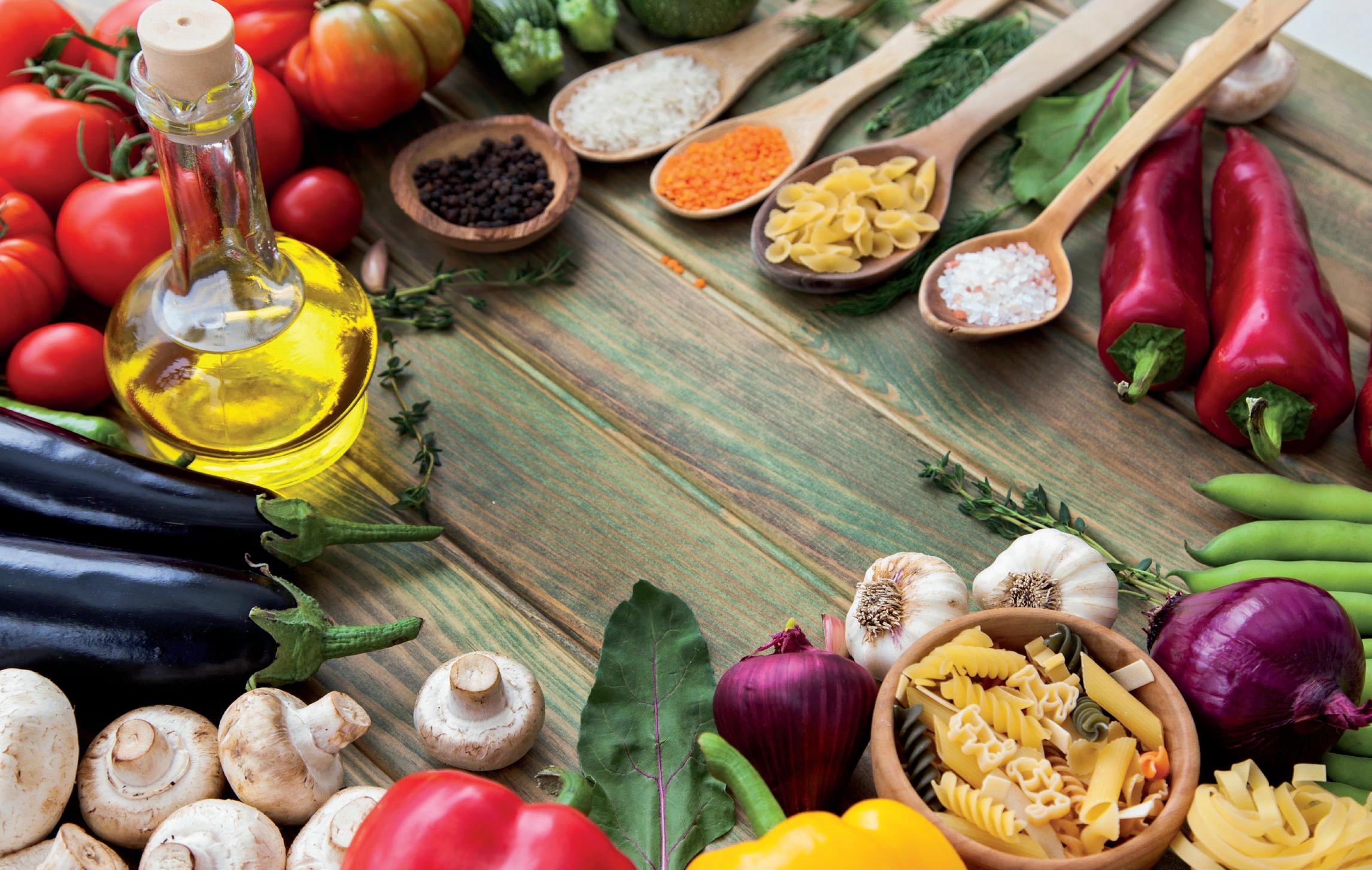











Guess what? We brought the big taste of real SKIPPY® Peanut Butter down to bite size! These portable, pop-able P.B. Bites are packed with flavor and comes in two different varieties. Find them in the peanut butter aisle.



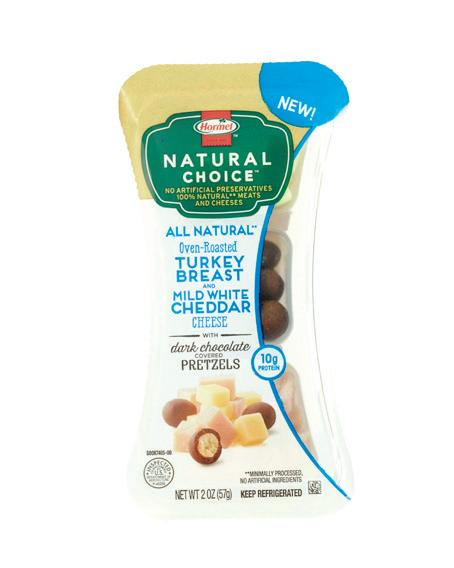

Each one of our carefully crafted snacks includes bitesized pieces of our 100% natural meat and cheese— all minimally processed, without artificial preservatives or ingredients. Every snack ends with a chocolate-covered treat. Learn more at makethenaturalchoice.com


The old joke that there are three seasons in Alabama — football season, spring football season and recruiting season — isn’t really that far from the truth.
Think of the other great rivalries in college sports: Ohio State vs. Michigan, Georgia vs. Florida, Texas vs. Oklahoma, even North Carolina vs. Duke basketball — all those states have professional sports teams within their borders. The college rivalries might or might not be the biggest thing going in their particular city or region, but they still have to compete for spectators, media attention and television eyeballs with the professional sports teams.
It’s even different from many states in the South. Fans in Alabama don’t have the Saints to salve their wounds on Sunday if their college team loses on Saturday, the way their counterparts in Louisiana do. They don’t have the Braves to keep their minds occupied during the
Unless you’re a resident of one particular state, you’re going to resent this. I know you are. I
Probably because you’ve heard it before from various radio pundits and televised talking heads. But what’s one more time among friends?
The Alabama-Auburn football rivalry is the greatest in college football. There, I said it. The question is, do you believe it?
Well, allow me to convince you, with a technique we in the sports-writing game like to refer to as a “list.” Below are five reasons the Alabama-Auburn football rivalry is the greatest in college sports.
(If you’re from the state of Alabama, you probably don’t need convincing. I invite you to read this article anyway, all the while nodding along knowingly):
summer, as is the case with their brethren in Georgia. They don’t have the NBA as a winter distraction the way they do in Orlando, or the NHL to re-channel their sports fan energy like in Nashville.
Alabama does have a handful of minor-league baseball teams, and Birmingham has a lower-level soccer club team that is growing in popularity. But those are merely nice off-season diversions, a good way to enjoy some cheap entertainment in the outdoors, not anything to be taken all that seriously.
No, in Alabama it’s college football — and specifically Alabama vs. Auburn — 12 months and 365 days a year. The Iron Bowl rivalry is often compared to a religion, only many people in the state take it much more seriously than that.
And that’s because it’s usually the only game in town. Sure, the other colleges in the state — South Alabama, Troy and UAB among them — have their following, but most of them also have an allegiance to either Auburn or Alabama.
The football coach at the University of Alabama is the mostrecognized person in the state, whether that’s Bear Bryant, Nick Saban or Mike Shula. He’s typically more powerful than the governor, more influential than any civic or religious leader.
Auburn’s coach is a distant second, but he’s still second. And on occasion, as in the case of Pat Dye or Tommy Tuberville, he’s able to flip that dynamic for a while.
We listed three great college football rivalries in addition to the Iron Bowl above — Ohio State-Michigan, Texas-Oklahoma and Florida-Georgia. Each of them is heated, competitive and relevant in its own way, but what they don’t have is proximity.
Sure, those states share borders and sometimes media markets (including Dallas for Texas-Oklahoma and Jacksonville for Florida-Georgia). But the fans don’t generally live and work with each other 365 days a year.
If you’re an Ohio State fan living in Cleveland, you probably don’t hear much about Michigan throughout the year. And you certainly don’t have to hear from their fans if your team is unfortunate enough to lose to the Wolverines during football season.
A Georgia fan in Atlanta doesn’t have to think about Florida in March; she’s not bombarded with orange and blue or the Gator chomp everywhere she goes. She doesn’t have to read about Florida in local news coverage or hear about the Gators from the gal in the next cubicle.
That’s not the case with Alabama-Auburn. Crimson Tide and Tiger fans are right on top of each other all year long. They share workplaces, churches and even the same home on occasion (though such so-called “mixed marriages” are an ill-advised concept).
Yes, there are other great intrastate rivalries — Florida-Florida State, Mississippi State-Ole Miss, Kentucky-Louisville among them — but they simply don’t hold up to the Iron Bowl. Florida State isn’t even Florida’s most-hated rival; that’s Georgia.
Mississippi State-Ole Miss is an all-consuming rivalry, there is little doubt, but those teams are rarely competitive at the same time. Kentucky-Louisville … well, that’s mainly about basketball. Does that even count?
Though the better team nearly always wins the Iron Bowl, it has been an incredibly even series in the last three-plus decades. Since Bryant retired following the 1982 season, Alabama and Auburn have each won the Iron Bowl exactly 18 times.
There have been streaks — Auburn won four straight from 1986 to 1989 and six in a row from 2002 to 2007, while Alabama has won four of the last five. But to Auburn’s credit, every time it seems like Alabama is going to run away with the rivalry, the Tigers pull off an incredible, heart-stopping victory.
In 1972, Auburn’s David Langner scored two touchdowns in the final minutes — both on blocked punts by Bill Newton — to knock off heavily favored Alabama 17-16. It would be the Crimson Tide’s only SEC loss in a five-year span from 1971 to 1975.

Every season since 2008 — a streak that has reached 11 years and counting — either Alabama or Auburn has been ranked No. 1 or No. 2 nationally on the day of the Iron Bowl. That means the winner of the game stands a good chance of remaining in the national championship race, or vaulting into it.
Three times in that same span, both teams have been ranked in the Top 10 nationally. On those occasions, the Iron Bowl has acted as a de facto elimination game, with the winner headed to the SEC championship game to play what amounts to a College Football Playoff play-in game.
In 10 of the last 11 years, the winner of the Iron Bowl has won the SEC West championship (LSU in 2011 is the only team to break that streak, though Alabama won the national championship that season). The Iron Bowl winner also won the BCS National Championship Game in 2009, 2010, 2011, 2012, 2015 and 2017, and played for it in 2013 and 2018.
And it’s not as if it’s only Alabama that has parlayed the Iron Bowl into a championship run. Auburn won the game in 2010, 2013 and 2017, winning the national title in the first year, playing for it in the second and falling in the SEC championship game in the third.
The game’s championship relevance is a big reason why the Iron Bowl has been on national television in the CBS midafternoon or ESPN primetime slot every year since 1994, which is a span of a quarter-century. Television executives know that casual fans care about the Iron Bowl too.

In 1984, four-win Alabama scored a 17-15 upset when blocking back Bo Jackson ran the wrong way, leaving teammate Brent Fullwood exposed for a game-saving tackle by the Crimson Tide’s Rory Turner. The following year, Alabama won 25-23 on Van Tiffin’s last-second, 52-yard field goal in a game that featured four lead changes in the fourth quarter.
Alabama won 26-21 in 2009 on a final-minute touchdown pass from Greg McElroy to Roy Upchurch, keeping the team’s national title hopes alive. Auburn won 28-27 in 2010 behind Heisman Trophy winner Cam Newton after trailing 24-3 at halftime, keeping Auburn’s national title hopes alive.
And then there was 2013, which might be the most fantastic finish in college football history. After Saban successfully argued to have one second put back on the clock at the end of regulation, Auburn’s Chris Davis returned a missed 57-yard field goal by Adam Griffith 109 yards for the winning touchdown in a 34-28 Tigers victory forever immortalized as the “Kick Six.”
Big wins in the Iron Bowl get their own nickname — “Punt Bama Punt,” “Wrong Way Bo,” “The Kick,” “The Cam-back” and the “Kick Six.” Say those words around an Alabama or Auburn fan and there will be little confusion as to which game you are talking about.
Fanaticism is not necessarily the most admirable quality for one to possess, but it does speak to the intensity of the Iron Bowl rivalry.
In addition to routine verbal altercations, sporadic post-game fistfights and occasional acts of homicide, Alabama and Auburn supporters have engaged in various forms of creative retribution over the years. When the rivalry resumed in 1948 after a four-decade dormancy, the two sides made a big show of burying the hatchet — burying an actual hatchet at a park in Birmingham.
It didn’t take.
In the early 1990s, Auburn was hit with major NCAA sanctions — including the aforementioned television ban — stemming from payments to players. At the center of this was defensive back Eric Ramsey, who caught an Auburn assistant coach and a booster on tape offering him gifts of cash and merchandise.
Corky Frost — the Auburn booster who was caught up in the scandal — was so angered by the NCAA ruling that he made up his
mind to drag Alabama down with the Tigers. He allegedly convinced former Alabama player Gene Jelks, who was disgruntled over being moved from running back to cornerback late in his college career, to help him.
Jelks recorded a phone call with former Alabama assistant Jerry Pullen, in which he claimed to have been paid cash while still in high school. Pullen later sued Jelks, who recanted.
It was too late. Jelks’ allegations resulted in an NCAA investigation that eventually saw Alabama stripped of a number of victories in 1993 and banned from a bowl in 1995, largely for other offenses.
But that incident pales in comparison to the saga of Harvey Updyke. Updyke, a lifelong Alabama fan, was so incensed at Auburn’s 28-27 victory in the 2010 Iron Bowl — along with some misconceptions he had about Tiger fan behavior over the years — that he committed an act so egregious that he’s become a pariah on both sides of the rivalry. In the middle of the night that December, Updyke poisoned Auburn’s treasured Toomer’s Corner oak trees with an industrial strength pesticide, then went on Paul Finebaum’s radio show — which was broadcast to a statewide and regional audience — to brag about it.
It was a story that shocked and disgusted the college football world, landed Updyke in jail and apparently ruined him financially. It’s a cautionary tale of fanaticism, but also one that speaks to the intensity — and borderline insanity — of the Iron Bowl rivalry.

Sorry I got a little sober there at the end. I’d like to be able to tell you that we all learned a lesson from Harvey Updyke, that we in Alabama no longer take football as seriously as we once did.
But that wouldn’t be the truth. There’s simply too much day-to-day relevance, too much history, too much proximity, too many great games and legendary names for us to quit the Iron Bowl rivalry now.
We’re fans after all, a term that is short for “fanatic.” And that will continue to be true as long as there is a University of Alabama Crimson Tide, as long as there are Auburn Tigers and as long as there is college football.
It’s what we’re known for throughout the country at this point. It’s our brand — for (mostly) better or for (every once in a while) worse.

Alabama Slammer (Makes 1 cocktail)
WHAT YOU WILL NEED:
1 ounce Southern Comfort
1 ounce amaretto
1 ounce sloe gin
2 ounces orange juice
Cherry, for garnish
Orange slice, for garnish
HOW TO PREP:
Add all ingredients (except garnish) to a cocktail shaker filled with ice. Shake until chilled and well-mixed.
Strain into a highball glass over ice.
Slide cherry and orange slice onto a toothpick or cocktail pick. Place garnish in drink.
by SARAH BAIRD
At first blush, “Alabama Slammer” might sound more like a Southern-bred pro wrestler who’s waiting to hit the big time than a beloved, boozy party drink. But one sip of this jolting, neon-hued blend of Southern Comfort, sloe gin, amaretto and orange juice, and you’ll understand why tailgaters and college students alike have been tipping their cups up with the high-octane cocktail for decades.
A s with so many deeply ingrained pieces of regional lore, the origin story of the Alabama Slammer is a little murky. Harry’s Bar in Tuscaloosa, Alabama — home of “Roll Tide!” and the “Million Dollar” marching band — claims to be the originator of this shot-ready, easily-batched drink, but the history books suggest otherwise. A recipe for the Alabama Slammer appeared in the 1971 edition of Playboy Bartender’s Guide a year before Harry’s opened, where it is described as a combination of Southern Comfort, amaretto, sloe gin and lemon juice. Orange juice replaced the lemon juice in its next written record — when a recipe for it was included in the 1984 Mr. Boston Official Bartender’s Guide — and soon was the go-to citrus for brightening up a sweetleaning drink.
Its date with destiny, though, arrived through a young, freshfaced actor named Tom Cruise in the 1988 film Cocktai l. Cruise waxed poetic about the drink in the movie’s now-infamous “last barman poet” speech, setting the Alabama Slammer up for plenty of national attention:
I am the world’s last barman poet, I see America drinking the fabulous cocktails I make, Americans getting stinky on something I stir or shake:
The Sex on the Beach
The Schnapps made from peach,
The Velvet Hammer,
The Alabama Slammer…
Following the Cruise-infused push towards national notoriety, the drink found so much mainstream acceptance that it was a wildly popular “pitcher cocktail” at TGI Friday’s for years. And today, it continues to be an Alabama party drink tradition — whether it’s gameday or not.


by SARAH BAIRD,

The concept of a “golden egg” as a highly covetable item has played a surprisingly outsized role in our pop culture history for centuries. There’s the classic children’s tale about the goose who laid golden eggs: an Aesop’s Fable which teaches that being greedy can lead to the destruction of something beneficial. There’s the bratty, spoiled antihero of Roald Dahl’s beloved book, Charlie and the Chocolate Factory, who is sent down the trash chute after insisting — via a humdinger of a temper tantrum — that she be given one of Willy Wonka’s golden-egg-laying geese.
A nd then, in Mississippi, there’s the Golden Egg trophy.
Each year on or around Thanksgiving, the University of Mississippi and Mississippi State meet in an intrastate football clash that’s come to be known as the Battle for the Golden Egg — or the Egg Bowl, for short. The term was coined by The Clarion-Ledger in 1977, when the headline, “Egg Bowl Is Up for Scramble” helped to elevate the annual game into a high-stakes showdown. The following year, Clarion-Ledger journalist Steven Doyle wrote of the contest:
“In a year in which neither team will be remembered, the Battle of the Golden Egg is a bowl game. Intense, heated, unbelievable in its lore, this one is for supremacy of the season. Bragging rights, recruiting edges and sheer pride are the guts of it. Every
Bloody Mary Deviled Eggs (Makes 12 eggs)
WHAT YOU WILL NEED:
6 hard-boiled eggs, peeled
2 tablespoons mayonnaise
2 tablespoons tomato juice
2 teaspoons prepared horseradish
1 teaspoon paprika
¼ teaspoon salt
12 small celery leaves
cliché you’ve ever heard about a single game applies to it.”
But by the time the Egg Bowl found its name, Oxford and Starkville’s gridiron finest had already met dozens of times on the field. The first matchup between Ole Miss and Mississippi State (which was, at the time, called Mississippi A&M) was in 1901, when Mississippi State won handily, 35-3. In 1927, the Golden Egg trophy — a hulking, football-shaped brass piece mounted to a wooden base — was introduced, and now, each year, it lives in
Slice eggs in half lengthwise. Remove yolks and place in small bowl.
Mash yolks with fork or potato masher. Stir in mayonnaise, tomato juice, horseradish, paprika and sea salt until smooth and creamy.
To rim eggs, place additional paprika on small plate. Dip cut sides of egg-white halves into paprika to coat.
Spoon or pipe yolk mixture into egg-white halves. Refrigerate for 1 hour or until ready to serve. Top each with a celery leaf.
glory at the respective victor’s school until the following year’s matchup.
Over the past 115 years, there have been plenty of chances for bragging rights (and plenty of brawls) on both sides. Mississippi State has had the most wins overall, and posted the largest win in the rivalry’s history, demolishing Ole Miss with a 65-0 victory in 1915. Ole Miss, though, has the longest unbeaten streak of the two teams, having not lost a single Egg Bowl game for 18 straight years, from 1947 to1963.
But whichever team finds the Golden Egg in their clutches at the end of the season, the annual game is a testament to the idea that the best rivalries are — more often than not — homegrown.

WHAT YOU WILL NEED:
2 ounces brandy
1 ounce bourbon
1 ounce dark rum
1 tablespoon powdered sugar
Juice of half a large lemon Lemon slice, for garnish
HOW TO PREP:
Pour lemon juice into a large glass or cocktail shaker. Add sugar to the juice, and stir it in well, until it’s well-dissolved.
Add the brandy, bourbon and rum to the glass, mixing well.
Add ice and shake well, then pour over ice into a tall Collins glass.
Garnish with lemon slice.
See our catering-to-go menu at www.rouses.com
by SARAH BAIRD
When it comes to parties, there’s something absolutely magnetic about a big bowl of boozy punch. Whether it’s the typically jewel-toned hues of punches that attract eager imbibers, the ability to playfully slosh it into one’s cup or the communal feeling of sharing in the same sippable experience, the punch bowl is often the alcoholtinged centerpiece around which everyone gathers to catch up, gossip and get their soirée started off on the right (loosened-up) foot.
In the opening pages of his 2010 book Punch: The Delights (and Dangers) of the Flowing Bowl, acclaimed cocktail historian David Wondrich writes of his experience crafting punches for a crowd. “Before you know it, everyone’s chattering away with tipsy animation, and it’s a party. Sure, there are always a few holdouts, but sooner or later all but the most stridently resistant will get sucked in. Nobody likes to be the odd person out, particularly if all it takes to participate is to stand around sipping something truly delightful, made from a formula Charles Dickens used to enjoy. But that’s the beauty of punch. The ‘flowing bowl,’ as its devotees used to call it, makes itself the catalyst for, and focus of, a temporary community of drinkers.”

If you’re a punch novice — and your partygoers can handle a stiff drink — there’s no better place to start your journey into “flowing bowl” recipes than with Mississippi Punch. Originally appearing in Jerry Thomas’ legendary 1862 cocktail tome, Bon Vivant’s Companion, the punch boasts a stout combination of cognac, bourbon, dark rum (yes, three hefty spirits) plus lemon juice and sugar. What’s more, Thomas’ version was calibrated for maximum tipsiness: The recipe dictates one wineglass full of cognac as a measurement, with a half-wineglass each of the bourbon and rum. (Yikes!) And while modern iterations are a little less gung-ho with such generous pours, the resulting punch remains just as balanced and delicious as it is unabashedly liquor-forward. Trust me, this is nothing like the sherbet and Sprite “punch” concoction you glugged down at your eight-year-old cousin’s birthday party.






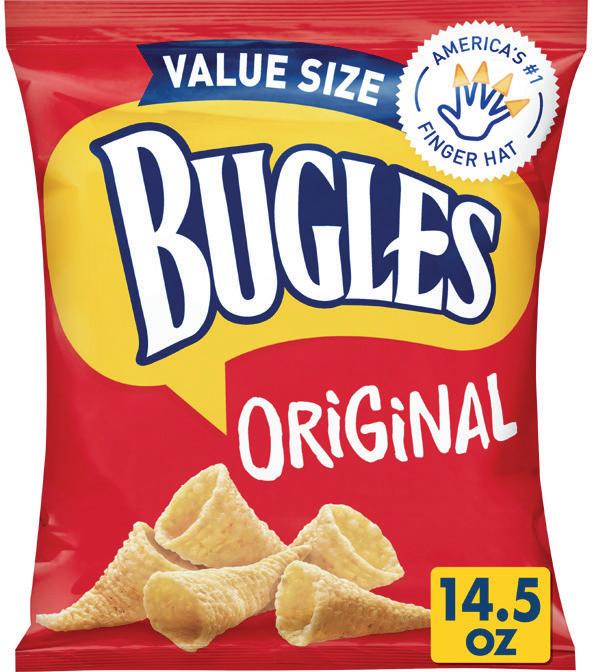




































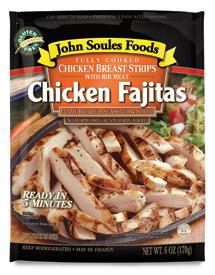

























































































































































































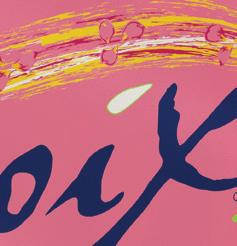



































































































































































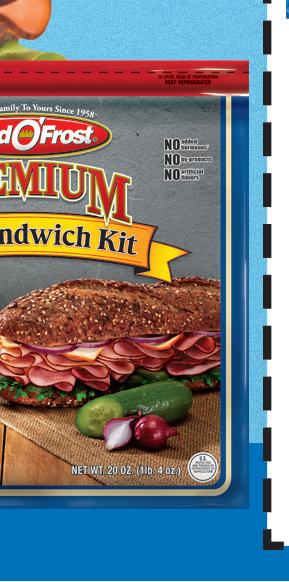








































by LUKE JOHNSON, photo by channing candies
It was as good a sign as any that things have changed in Thibodaux, Louisiana: The first words spoken by the Nicholls State football coach regarded satisfaction and the need to avoid it.
S atisfaction was a foreign concept around Thibodaux in those lean decades before Tim Rebowe’s 2015 arrival. Nicholls experienced exactly four winning seasons in the quarter-century before Rebowe got there. He inherited a Colonels program in the midst of a particularly ignominious 18-game losing streak, during which they were outscored by an average of 30.9 points per game.
The last night of the pre-Rebowe era was a fitting disaster: A 62-3 shellacking at the hands of rival Southeastern, at home no less, to clinch an 0-12 season. Rebowe was in town that night, but opted to stay at the hotel instead of going out to watch the game. The next day, Nicholls State announced him as its 10th head football coach.
What does a man tell his friends and colleagues when he takes on such a daunting challenge? The truth: There was nowhere to go but up.
“You can come in and try to change the mind-set a little bit, change the culture,” Rebowe said. “It had to be changed. Everybody was negative. Nicholls around the state, around the conference, was not really well respected.”
What has transpired since is a testament to the power of optimism, and Rebowe — a spry 56-year-old whose bright white crew cut makes him easy to pick out in a crowd of young players — is filled to the brim with the stuff.
On that team that had lost 18 straight games, he saw some good players who simply lacked the cohesive elements that make a strong unit, so he set to work implementing a sense of camaraderie and trust. On the recruiting trail, Rebowe sold a dream of what the program could be and found some key buyers. He assembled a coaching staff that reinforced his positive mind-set.
Four years later, Nicholls is on the heels of back-to-back winning seasons — the first time that could be said of the Nicholls program since it was a member of the now-defunct Gulf Star conference in the mid-80s. Rebowe’s team hosted its first playoff game in program history in 2017, then did it again in 2018. The Colonels were the unanimous pick to repeat as Southland Conference champions this season in the league’s preseason poll.
Rebowe’s team had nowhere to go but up, and he successfully illuminated the path to the ladder. Now the trick is keeping the eyes focused on the top rung.
It takes only a few seconds and a discerning ear to figure out why Rebowe is a good fit in Thibodaux. His accent immediately points to some South Louisiana roots. That is important in a place like Thibodaux.
“You’ve got to be able to speak the language,” Rebowe said.
Trace Bayou Lafourche out of Thibodaux and hang a left at Raceland to hop on Highway 90 eastbound. Drive through Des Allemands and Boutte, then take 310 north to Norco, Louisiana — a roughly 45-mile trip to Rebowe’s hometown.
That’s where he and his brother, Rusty Rebowe — who earned All-American status as a Nicholls State linebacker in the ’70s — first developed a love for football. And in all of Rebowe’s years coaching, he has rarely strayed very far from that starting point.
His first football coaching job was as the head coach at Harry Hurst Middle School. That led to jobs at Destrehan High School, Nicholls State (as an assistant on Darren Barbier’s staff), University of Louisiana Monroe and University of Louisiana Lafayette. Remarkably, he has never left the state in a coaching career that now spans more than three decades.
The by-product of all that time spent mostly in place is a fortified network of relationships.
“These [high school coaches] trusted me and said, ‘Hey, he’s one of us,’” Rebowe said. “Then you go back and recruit those schools. I built all those relationships, even in the years I was at ULM and ULL, you kept that relationship and you treated people the right way.
“And they don’t forget that. So it was easy when I got the head coaching job. These guys wanted Nicholls to recruit their school, recruit their players and have a place for them to play.”
His earliest classes included some foundational players to build around, including quarterback Chase Fourcade, the 2018 Southland Conference Player of the Year, and All-American defensive lineman Sully Laiche; both players were part of Rebowe’s second signing class and now figure to be instrumental in Nicholls’ 2019 success as seniors.
Rebowe has used Louisiana’s vast pool of football talent to build up his program; all but six players on Nicholls’ current roster attended a Louisiana high school.
“I think it matters,” said Nicholls State Athletic Director Matt Roan. “He understands our community, our region and everything inside of that. When he goes to high schools, the high school coaches appreciate him, they know he cares about the place and their student athletes.”
That Rebowe is a product of South Louisiana is not lost on the community he lives in, either.
Donny Rouse, CEO of Rouses Markets and a Thibodaux resident, felt the excitement in the community when Rebowe took the job. Not only excitement, but comfort in having a local man lead the football team out of the dark place it was in.
Rebowe is Rouse’s neighbor, which gives him an up-close and personal glimpse at the way the community and its football coach have embraced each other.
“The whole atmosphere about Nicholls football has turned around,” Rouse said. “People are tailgating before the games, people are going to the games, they’re traveling to away games. It’s exciting to have that in Thibodaux.”
One can learn something about a person by taking stock of the things they surround themselves with. Rebowe’s office in Barker Hall on Nicholls State’s campus is sparse when it comes to trinkets and personal mementos, but it speaks to the type of character he has been trying to establish in his program.
The white board to the side of his desk is filled with reminders and motivational one-liners in neat, block handwriting. Framed news clippings hang on the walls to commemorate big wins and pride in the program. A sword — like the one in the Colonels’ logo — with gold inlay on the black pommel and sheath hangs above his desk.
“One day it was shipped to my house,” Rebowe said. “It was anonymous, I couldn’t find who it was from, but it has to be a big supporter.”
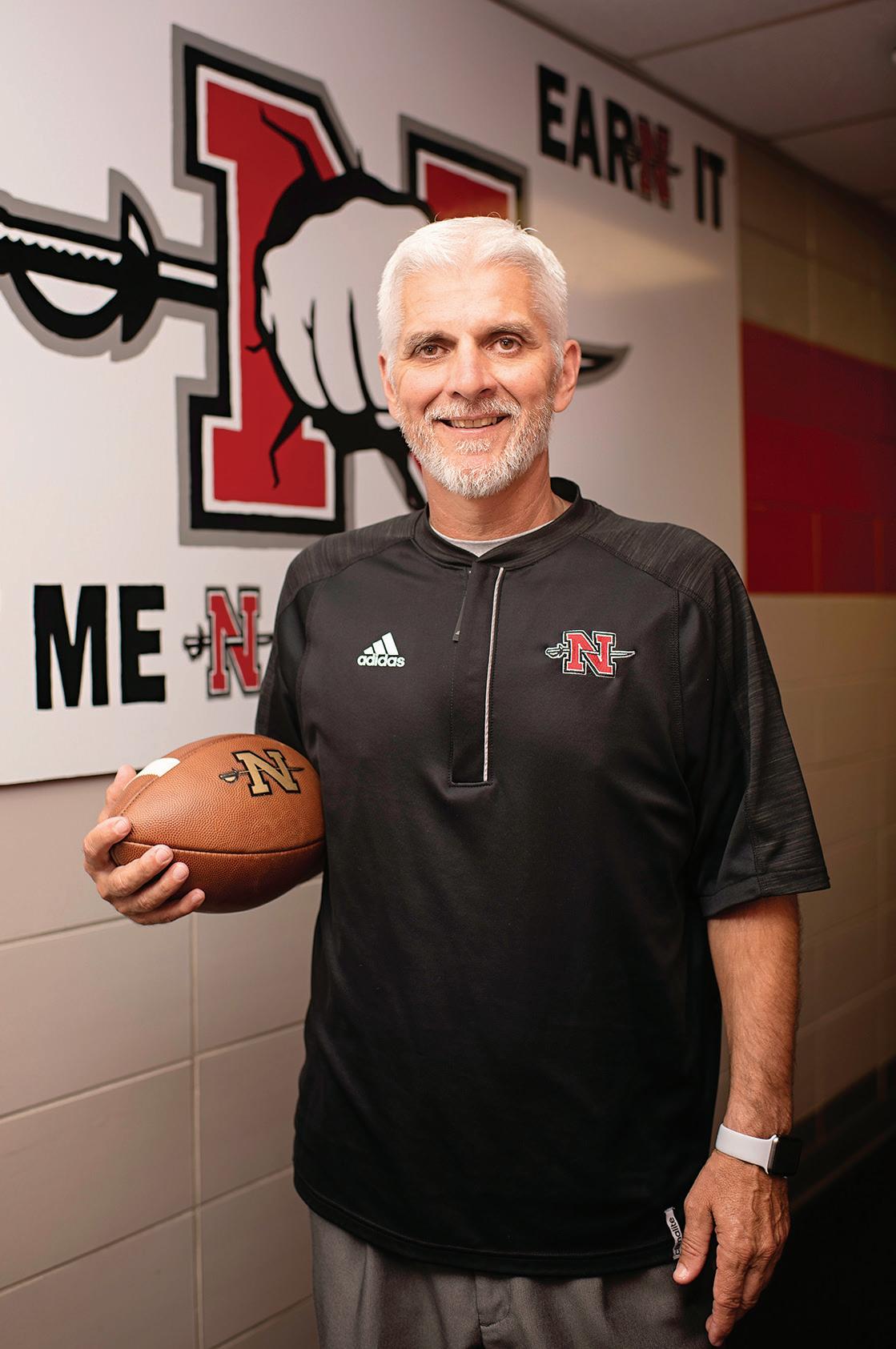
On top of the filing cabinet near the doorway is a miniature boxing bag, meant to symbolize the fighting spirit Rebowe wants to see in his football teams. “All we’re going to do is keep punching. At the end of the fight, at the end of the game, we’re going to see who’s standing,” Rebowe said, adding that Nicholls State brings boxing gloves to games.
One wall is dominated by posters of the slogans Rebowe and the football program generate each year to establish a sort of guiding principle, distilling the larger idea he is always trying to evoke.
The first year was “All In,” followed by “Earn It in Year 2” and “Count Me in in Year 3.” Rebowe is particularly proud of the slogan they coined last year, “One Way.” Hanging next to the sword on the wall is a One Way sign, and Rebowe wore a shirt with the campaign logo on it as he conducted an interview for this story.
“If we are all moving in the same direction, if we’re all together on the same page, there’s no way we can be stopped,” Rebowe explained. “Inside of that arrow are a bunch of little arrows — different sizes, different shapes, different speeds, different colors. That embodies our team. If we were all moving in the same direction, we can’t be stopped.
“But if you miss class, or you’re late for weights or you get in trouble and those little arrows start going the other way, you’re dividing it. Then we’re going to have trouble.”
The 2019 slogan? “Right Now” — urging players to be present in the moment.
Rebowe’s process of turning the Colonels’ program around centered on reshaping the culture whose roots dug deep as decades of losing seasons piled up. He told the players he cared about them, then he devoted himself to proving it. The glass was always half full, even as Nicholls lost its first five games with Rebowe as coach, extending the losing streak to 23 games.
Despite those early losses, Rebowe saw the perspective he was trying to cultivate take hold immediately, and Nicholls has been reaping the benefits ever since. It is positivity that is backed by trust.
“It wasn’t always rainbows and butterflies,” Rebowe said. “But it was a positive atmosphere, a trusting atmosphere, and those guys felt it right away.”
The first 20 years of Rebowe’s college coaching experience were spent as an assistant coach. Twice he applied for the Nicholls State job — once in 1998 and again in 2010 — and twice he was turned down. Each time he met with rejection, he chose to believe that it had happened for a reason.
Throughout those years spent waiting for his opportunity, Rebowe paid close attention to the coaches he worked under. He identified things they did that he would incorporate into his own program, and also things he would not do. While he waited, he learned.
What came of that is a coach who knows exactly what he wants his program to be. And perhaps because he is older and more mature, he is also in a position where he knows how to make that vision a reality.
“He dreams big,” Roan said. “He thinks that special things can be accomplished here, that we’re just scratching the surface of what it is we’re trying to do.”
In the last two seasons under Rebowe, Nicholls has won 17 of its 25 games. It clinched its first playoff victory in more than 30 years. There is legitimate excitement about the football program in the community, and the community is starting to show it by supporting the program financially. Construction is expected to begin soon on a new end zone facility at Guidry Stadium on campus.
From the beginning, Rebowe believed in the Nicholls State football program. And here’s the thing about a glass-half-full type like Rebowe: There is always room for more.
If Nicholls is starting to get respect around the state, Rebowe wants it nationally, annually. He does not want this to be a flash in the pan, but sustained success that will make people want to come to Thibodaux and play football. He wants his program to keep looking for a new top rung of the ladder once it has reached a previously unreachable height.
“Why not here?” Rebowe said. “Why not Thibodaux, Louisiana; why can’t it be done?”
Satisfaction? No, remember: That is a foreign concept here.






(Makes 4 cups)

Black Bean Dip (Makes 2 cups)

Corn Macque Choux Dip
(Makes 6 cups)

Spicy Dill Dip
(Makes 2 cups)


Fresh Crab Dip
(Makes 21/2 cups)

WHAT YOU WILL NEED:
7 cloves garlic
2 serrano chiles, stemmed, halved and seeded
1 habanero chile, stemmed, halved and seeded
2 medium tomatoes, cored and seeded
1/2 medium yellow onion
11/2 cups canned fire-roasted tomatoes, drained
¹/₃ cup fresh lime juice
¼ cup chopped cilantro leaves
Kosher salt, to taste
WHAT YOU WILL NEED:
1 15-ounce can black beans, rinsed and drained
1 clove garlic
¼ teaspoon ground cumin
¼ cup sour cream
¼ cup cilantro leaves
2 tablespoons lime juice
1 teaspoon salt
Mission Corn Tortilla Chips, for serving
WHAT YOU WILL NEED:
2 tablespoons butter, unsalted
1/2 cup white onion, diced
¼ cup bell pepper, diced
¼ cup celery, diced
2 tablespoons Creole seasoning
3 cups corn, cut off the cob
1/2 cup heavy cream
8 ounces Philadelphia Cream Cheese
6 ounces mozzarella cheese, shredded
2 tablespoons parsley, chopped
1 ounce green onions, chopped
WHAT YOU WILL NEED:
1 cup Oikos Greek Yogurt
1 cup light sour cream
1 large jalapeño
1/2 tablespoon dried dill
1/2 tablespoon dried parsley
1 teaspoon sea salt
1 teaspoon onion powder or dried onion
1 teaspoon garlic powder
1 teaspoon chopped fresh green onion tops
Celery sticks or Nabisco Good Thins, for serving
WHAT YOU WILL NEED:
1 pound fresh Gulf lump crabmeat, picked through
3 ounces capers
2 tablespoons Blue Plate Mayonnaise
Ritz Crackers, for serving
HOW TO PREP:
In a food processor, chop garlic and chiles. Add tomatoes and onion; pulse until chopped. Add fire-roasted tomatoes, lime juice and cilantro; pulse until finely chopped.
Season with salt to taste.
HOW TO PREP:
Combine the beans, garlic, cumin, sour cream, cilantro, lime juice and salt in a small food processor. Add ¼ cup warm water and puree until smooth.
Transfer the dip to a bowl and serve alongside the tortilla chips.
HOW TO PREP:
Heat the butter over medium-high heat; add onion, bell pepper and celery, and sauté until translucent.
Add the Creole seasoning, and sauté for an additional 2 minutes.
Add the corn and sauté for 3 to 4 minutes, then add the heavy cream. Simmer until cream is reduced by half and it thickens slightly.
Add the cream cheese and mozzarella cheese, and stir until fully melted and incorporated into the corn mixture.
Garnish with parsley and green onions, and serve with corn tortillas or your favorite chips.
HOW TO PREP:
In a medium bowl combine Oikos Greek Yogurt and sour cream.
Cut off the stem of the jalapeño. Mince the jalapeño (remove the seeds for a milder dip) and add to the sour cream mixture.
Stir in the dill, parsley, salt, onion powder, garlic powder and green onion tops, and cover with plastic wrap.
Chill in the refrigerator for a minimum of one hour.
Serve with fresh celery sticks or Nabisco Good Thins.
HOW TO PREP:
Mix the crabmeat, capers and just enough mayonnaise to moisten them in a bowl.
Refrigerate for at least one hour.
Serve with Ritz crackers for dipping.

(Makes 3 cups)
WHAT YOU WILL NEED:
1 pound red beets
1 tablespoon vegetable oil
1 teaspoon salt
1 teaspoon black pepper
8 ounces goat cheese, softened
4 ounces Philadelphia Cream Cheese, softened
HOW TO PREP:
Preheat oven to 350°F.
Peel and quarter the purple beets, then toss them in the oil, salt and pepper.
Place beets on a sheet pan lined with parchment paper. Put pan in oven and bake for 25 minutes or until a knife easily pierces the beets.
Remove the pan from the oven, and place the roasted beets in a food processor along with the softened goat cheese and Philadelphia Cream Cheese. Pulse the mixture a few times before blending on high until smooth.
Scoop the beet dip into a bowl to serve.
WHAT YOU WILL NEED:
1 pound golden beets
3 tablespoons cornstarch
Canola oil for frying
HOW TO PREP:
Slice the golden beets on a mandolin on its thinnest setting.
Toss the sliced golden beets in the cornstarch.
Fill a cast-iron pot with the canola oil no higher than halfway up the side. This allows room for the oil to expand as it heats, as well as allows adequate room for the beet chips to float in the oil.
Heat the oil to 375°F, using a thermometer to monitor the temperature. Blanch the beet chips, in small batches so as not to crowd them, in the oil for 3 minutes.
Carefully remove each batch from the oil, and place on a tray lined with paper towels. Add additional oil (to bring level back up to the halfway mark) if needed between batches.
After all of the beet chips have been blanched, place them back in the oil for an additional 4 minutes until they get crispy.
Serve with the Roasted Beet Dip.

Buffalo Chicken Dip
(Makes 5 cups)
WHAT YOU WILL NEED:
8 ounces Phildelphia Cream Cheese, at room temperature
1/2 cup Frank’s RedHot Sauce
1/2 cup sour cream
2 cups chopped Rouses Rotisserie Chicken
11/2 cups shredded Kraft Monterey
Jack Cheese
¼ cup finely chopped green onion tops, plus more for garnish
Mission Corn Tortilla Chips, for serving Celery sticks, for serving

(Makes 3 cups)
WHAT YOU WILL NEED:
2 8-ounce packages Philadelphia
Cream Cheese
5 ounces fresh buffalo mozzarella, chopped into chunks
3 tablespoons chopped fresh basil, reserving some for garnish
¼ cup Rouses Balsamic Vinegar
1/2 pint cherry tomatoes, sliced in half
Toasted baguette slices, for serving
HOW TO PREP:
Preheat oven to 350°F.
In a large bowl, mix together the cream cheese, mozzarella and basil (except for the reserved basil for garnish) until blended. Spread mixture into a medium oven-safe dish. Bake for 10 minutes or until the cheese is bubbly.
Meanwhile make the blasamic glaze. Bring the vinegar to a simmer in a small saucepan over medium heat. Let simmer for 30 seconds, then turn off heat. Let sit for 5-10 minutes to thicken.
Remove cheese dip from the oven and top with cherry tomatoes. Turn on broiler. Return dip to the oven, and broil until tomatoes are slightly brown.
Top with chopped basil and drizzle with balsamic glaze. Serve with toated baguette slices.
HOW TO PREP:
Preheat oven to 375°F
In a large bowl, mix the cream cheese with the hot sauce and sour cream until combined. Stir in the chicken, 1 cup of the cheese and the green onion tops. Spoon the mixture into a medium cast-iron skillet, and sprinkle the remaining 1/2 cup of cheese on top.
Place skillet on middle oven rack. Bake until cheese is bubbling, about 20 minutes.
Turn on the broiler. Move skillet to top rack of oven. Broil dip until lightly browned on top.
Let stand for 5 minutes.
Garnish with green onions and serve with tortilla chips and celery sticks.
(Makes 2 cups)
WHAT YOU WILL NEED:
3 garlic cloves, peeled
2 cups roasted sweet red peppers, drained 1/2 cup blanched almonds
(recipe follows)
¹/₃ cup Italian tomato paste
2 tablespoons Rouses Extra
Virgin Olive Oil
¼ teaspoon salt
¼ teaspoon pepper
Minced fresh basil, for garnish
Nabisco Good Thins or baguette slices, for serving
There are many variations on Pimento Cheese, but they all start with cheddar cheese, cream cheese, mayonnaise and pimentos, those sweet roasted red peppers (sold in those tiny jars) that you also find in olives.
Palmetto Cheese makes its Pimento Cheese with grated Wisconsin sharp cheddar, which makes for a tangier flavor. You can add a little lagniappe to yours –and top it with extra cheese.
Like your dips spicy? Choose Palmetto Cheese’s jalapeño version.
HOW TO PREP:
In a small saucepan, bring 2 cups water to a boil. Add garlic; cook, uncovered, just until tender, around 6-8 minutes. Drain and pat dry.
Place red peppers, blanched almonds, tomato paste, oil, garlic, salt and pepper in a small food processor; process until blended. Transfer to a small bowl. Refrigerate at least 4 hours to allow flavors to blend.
Garnish with basil and serve with Nabisco Good Thins or baguette slices.
Fill a small pan with water and bring to a boil. Add 1/2 cup raw almonds and let them boil for exactly one minute. Drain the almonds immediately in a colander or strainer. Rinse with cold water to cool.

by luke johnson
There are more than 1,000 member schools in the National Collegiate Athletic Association (NCAA), and fall Saturdays are a thing to celebrate thanks to several of those institutions sprinkled throughout our region.
Get to a Southeastern Conference (SEC) campus early to catch the signature smell of a tailgate and stay late to witness some of the nation’s finest college football. The 14 SEC schools — including charter members LSU, Alabama, Auburn, Mississippi State and Ole Miss — have combined to win nine of the last 13 national championships. Or catch another charter member of the SEC, Tulane — now one of 12 schools in the American Athletic Conference (AAC) — playing in its recently built Yulman Stadium, which opened its doors on campus in 2014. Two of the top programs in Conference USA (CUSA) reside in our region, as Louisiana Tech and Southern Miss have combined to win 67 percent of their conference games since 2015. If you feel the need to get your midweek football fix, catch a prime-time broadcast of the Sun Belt Conference’s (SBC) Wednesday night games. The SBC footprint extends from Texas Hill Country to the South Carolina coast, including the Louisiana Ragin’ Cajuns, the University of South Alabama and the University of Louisiana Monroe. If playoff football is more your cup of tea, keep an eye on the Southland Conference (SLC). Its member schools are part of the Football Championship Subdivision (FCS) and compete to be one of the 24 schools to make the NCAA Division I FCS playoff at the end of the year. From Louisiana alone, the SLC includes member schools McNeese State, Nicholls State, Southeastern and Northwestern State.
LSU
2018 record: 10-3
Notable alumni: Odell Beckham Jr., Jarvis Landry, Tyrann Mathieu
Interesting fact: Since 2005, LSU has had 19 defensive backs selected in the NFL draft, six of whom were taken in the first round. That is partially why LSU refers to itself as DBU — or Defensive Back University.
Alabama
2018 record: 14-1
Notable alumni: Joe Namath, Bart Starr, Mark Ingram
Interesting fact: Since Head Coach Nick Saban took the program over in 2007, the Crimson Tide has won five national championships — more than all but 17 programs in Football Bowl Subdivision (FBS) history.
Auburn
2018 record: 8-5
Notable alumni: Cam Newton, Bo Jackson, Kevin Greene
Interesting fact: John Heisman, the namesake of the Heisman Trophy, coached at Auburn (then the Agricultural and Mechanical College of Alabama) from 1895 to 1899. Three Tigers would go on to win the prestigious award — Pat Sullivan (1971), Bo Jackson (1985) and Cam Newton (2010).
Ole Miss
2018 record: 5-7
Notable alumni: Archie Manning, Eli Manning, Deuce McAllister
Interesting fact: The speed limit on the Ole Miss campus in Oxford is 18 miles per hour, a nod to the uniform number worn by Archie Manning. The speed limit dips to 10 miles per hour on parts of campus — matching the number worn by his son Eli.
Mississippi State
2018 record: 8-5
Notable alumni: Joe Fortunato, Dak Prescott, Fletcher Cox
Interesting fact: No better symbol exists for Mississippi State than the cowbell used by fans to add clamor to their cheers. Legend has it this tradition started after a cow walked onto the field during a thrashing of Ole Miss in the early 1900s.


Tulane
2018 record: 7-6
Notable alumni: Richie Petitbon, Matt Forte, Lionel Washington
Interesting fact: Tulane, a charter member of the Southeastern Conference, holds as many SEC football championships (3) as current SEC members Kentucky, Mississippi State, Vanderbilt, Arkansas, Missouri, Texas A&M and South Carolina … combined.
Louisiana Tech
2018 record: 8-5
Notable alumni: Willie Roaf, Terry Bradshaw, Fred Dean
Interesting fact: At the conclusion of his career in 1999, former Bulldogs quarterback Tim Rattay ranked No. 2 all time in Division I career passing yards with 12,746.
Southern Miss
2018 record: 6-5
Notable alumni: Brett Favre, Ray Guy, Patrick Surtain
Interesting fact: The Southern Miss athletic teams have been called the Golden Eagles since 1972. It’s the latest step in an evolution that has included the mascot names Tigers, Normalites and Southerners.
University of Louisiana 2018 record: 7-7
Notable alumni: Jake Delhomme, Brandon Stokley, Charles Tillman
Interesting fact: The university, located in the heart of Louisiana’s Cajun country, officially adopted the “Ragin’ Cajuns” moniker for its athletic teams in 1974.

South Alabama 2018 record: 3-9
Notable alumni: Gerald Everett
Interesting fact: South Alabama hands the No. 5 uniform every season as an award to a deserving senior to honor the memory of Anthony Mostella, a former Jaguars running back who died in an auto accident prior to the 2010 season.

Louisiana Monroe 2018 record: 6-6
Notable alumni: Doug Pederson, Stan Humphries, Bubby Brister
Interesting fact: The Warhawks were the darling of the college football world in 2007, when they stunned Alabama 21-14. They nearly pulled off the same feat a year later, losing 28-27 to Arkansas.

McNeese State 2018 record: 6-5
Notable alumni: Tom Sestak, Leonard Smith, Kavika Pittman
Interesting fact: Two of LSU coach Ed Orgeron’s sons — wide receiver Parker and quarterback Cody — played for McNeese in 2018.

Nicholls State 2018 record: 9-4
Notable alumni: Mark Carrier, Gary Barbaro, Lardarius Webb
Interesting fact: Coach Tim Rebowe has posted back-to-back winning seasons in Thibodaux. In the 26 years before his arrival, the Colonels managed just four winning seasons.
Northwestern State 2018 record: 5-6
Notable alumni: Jackie Smith, Mark Duper, John Stephens
Interesting fact: LSU coach Ed Orgeron started his playing career at LSU, but transferred to Northwestern State after his first year. He also got his start in coaching with the Demons.

Southeastern 2018 record: 4-7
Notable alumni: Robert Alford, Billy Andrews
Interesting fact: Southeastern discontinued its football program after the 1985 season because of budget cuts, but brought it back in 2003 under the leadership of former Kentucky coach Hal Mumme.
by michael tisserand
Bruce Springsteen, Waylon Jennings and Warren Zevon have all performed it. So did zydeco king Clifton Chenier. Every weekend across South Louisiana, Cajun bands play it while waltzing couples glide across wooden dance floors. It is “Joli Blon,” (other spellings include “Jolie Blonde” and “Jole Blon”), beloved as “the Cajun national anthem,” and first recorded in 1929 as a plaintive waltz by the Breaux family, with Cléoma Breaux Falcon singing its heartbreaking lyrics of true love’s elusiveness. The Cajun swing band The Hackberry Ramblers first recorded it under its current name of “Jolie Blonde,” and in 1946 Cajun fiddler Harry Choates had a Billboard Top 10 hit with his version, which Rolling Stone would name one of country music’s hundred best recordings.
But nobody does “Joli Blon” quite like they do at McNeese State University in Lake Charles, Louisiana. Go to any school football game at Cowboy Stadium; when McNeese scores, the band lights into one of college sports’ few waltz-time fight songs (another fight-waltz can be found in St. Olaf College up in the polka country of Minnesota). While pom-poms sparkle in the sun and students bedecked in blue and gold sway and clap in time, the McNeese band leans into the song’s 3/4 time until the whole thing culminates in wild cheers. It is the kind of defining crowd moment that a sunny college sports afternoon is built on. McNeese traces the history of its fight song to a former school band director named Eddie See. A popular musician
with wide-ranging tastes, See had a “wonderful reputation in this country being an old Crowleyite,” reported the Crowley Daily Signal in 1934. The story goes that See came across a student named Robert “Pluto” Landry — a barbershop singer who went on to become a music teacher himself — playing “Joli Blon” on the piano. See soon adapted it for the McNeese Band, even adding the “Vesti la giubba” aria from Ruggero Leoncavallo’s 1892 opera Pagliacci as an improbable crowd-hyping intro. Over the decades, McNeese had been trying out a number of fight songs, including a Jax Beer jingle in the early 1950s. But the Pagliacci -infused “Joli Blon” stuck. McNeese named it the official school song in 1970.
To complete the waltzing tailgate parties, McNeese and Bayou Teche brewery teamed up last year to introduce “Joli Blon,” a new official McNeese beer. Fittingly, it is a blonde ale.

See our catering-to-go menu at www.rouses.com.
We also have a great selection of ready-to-serve party trays and platters in our deli every game day.


by michael tisserand
Recorded on Valentine’s Day 1967, Aretha Franklin’s iconic soul song “Respect” became an anthem for both the Civil Rights and Women’s Rights movements. That summer, it could be heard from hi-fis and transistor radios throughout a burning season of social, political and racial upheaval. If any song could be said to have it all, it might be “Respect.” “There are songs that are a call to action,” the record’s producer, Jerry Wexler, later wrote. “There are love songs. There are sex songs. But it’s hard to think of another song where all those elements are combined.”
At the University of Southwestern Louisiana (now University of Louisiana Lafayette), it also became a wildly popular football song. And when it did, it played its role in bringing respect to this small Southern college and the region, at a time when it needed it most.
This story of “Respect” begins with two sisters and Opelousas dance teachers — Kathy Daly and Toni Wiley — who were refashioning the college’s Sweethearts dance team, designing new costumes and headpieces, and choreographing new songs. They chose “Respect” as their debut number, which they performed at a USL halftime show in 1967.
“The student body went crazy for it,” remembers Sherry LeBas, who started with the Sweethearts that year and soon became choreographer and, later, part of the college’s athletics staff. The Sweethearts brought a copy of Aretha Franklin’s recording to Jack Arceneaux, director of USL’s Pride of Acadiana marching band, and he wrote out a new arrangement. “Kudos to Jack, who took the pop song off the record and wrote it for all the instruments,” LeBas says.
It was a new thing for USL students, hearing a hit record performed at their football games, and it became a school sensation. As it turns out, the timing could not be better. At this same juncture in the late 1960s, another school musical tradition was starting to come under scrutiny. When Godfrey White transferred to USL from Wiley College in Marshall, Texas, he became the first AfricanAmerican student to start and letter on the college’s football team. Yet whenever he scored a touchdown, he’d hear the school band striking up its traditional fight song, “Dixie.” Celebrating his accomplishment with the anthem of the Confederacy didn’t feel right.
“It was throwing me off,” White remembers now. “The symbolism of it. That’s actually one of the reasons I discontinued playing football.”
White took time away from sports to devote his efforts to school integration struggles then boiling over in his hometown of New Iberia. In 1970, he was elected treasurer of USL’s Student Government Association, the first African-American student voted by students to one of the college’s top offices. Remembering his experience on the football field, he and other student leaders brought their concerns about “Dixie” to Raymond Blanco — White’s old football assistant coach who had become Dean of Men at the school.
Dropping “Dixie” from the band’s repertoire was controversial, both in the

college and throughout South Louisiana. “I find it inconceivable that Negro students at USL would object to the song ‘Dixie,’” wrote one woman to the Crowley newspaper, adding that those students must be “still fighting the Civil War.” The Lafayette Daily Advertiser ran an editorial extolling the old minstrel song as a work of art that “transcends sectionalism and prejudices.”
White credits Blanco with defusing the situation. “It starts at the top. Under Coach Blanco’s leadership, University of Southwestern Louisiana became very progressive, very accepting of the culture and music that African-Americans brought the school.”
Which brings the story back to the Sweethearts and “Respect.” Former University of Southwestern Louisiana student Chuck Allen would attend football games in the mid-1960s, and still remembers how the band would celebrate a touchdown run by playing “Dixie.” Allen noticed a change two years later when he returned to school following a tour in Vietnam. He was at a game, sitting with the Theta Xi fraternity next to the band, and they started chanting, “We want ‘Respect!’ he says. “It lifted our hearts. It was something no other school had.”
“It came out at the right time,” adds former student Claude Revels. “The entire school just embraced it. Now I don’t think of Louisiana without thinking of ‘Respect.’”
Godfrey White went on to remain active in politics and social issues, including serving in Kathleen Blanco’s administration. “It’s incredible to me that we were able to break those barriers at USL without any major conflict or negative demonstration,” he says.
“Respect” remains part of the musical and cultural fabric of University of Louisiana Lafayette. But these days, Sherry LeBas admits with a laugh, she stops herself from trying out the steps she helped choreograph — so she doesn’t throw out a hip. Yet she can vividly remember the magic and excitement of hearing the band hit the song’s first notes, of taking the field, of a stadium filled with students thunderously clapping along, as if all one body.
“It’s an all-encompassing song,” LeBas says. “It hits on all cylinders, and for all the right reasons.”


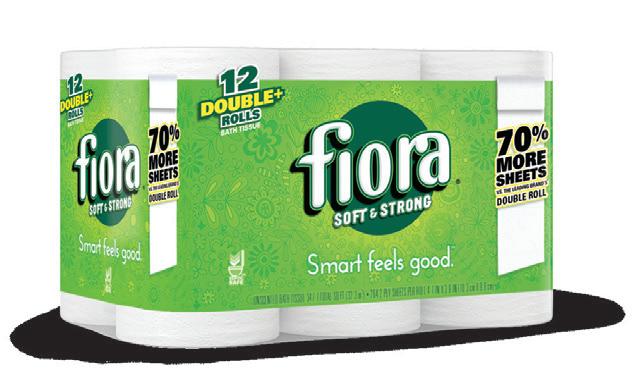












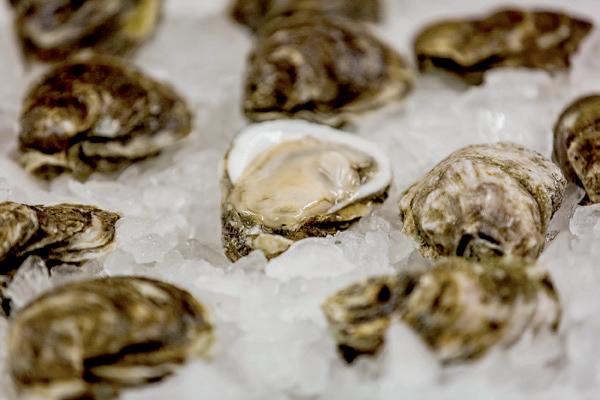




































24 OREO Cookies
1 pkg. (18 to 20 oz.) brownie mix (13x9-inch pan size)
24 OREO Thins Bites Fudge Dipped Sandwich Cookies
48 mini candy button eyes (about 2 tsp.)
1/2 oz. semi-sweet baking chocolate, melted
Line 13x9-inch pan with foil, with ends of foil extending over sides. Spray with cooking spray.
Separate regular OREO Cookies, leaving cream filling on 1 half of each cookie. Place cookie halves, cream sides up, on bottom of prepared pan. Break remaining (plain) regular OREO Cookie halves in half; reserve for later use.
Prepare brownie batter as directed on package; pour over cookie halves in pan.
Bake 25 to 28 min. or until toothpick inserted in center comes out with fudgy crumbs. (Do not overbake.) Cool 10 min.
Top with Fudge Dipped Sandwich Cookies in 6 rows of 4 cookies each; cool brownie completely.
Use foil handles to remove brownie from pan. Cut into 24 squares so that a fudge-dipped cookie is on top of each brownie square.
Attach 2 candy eyes to top of each fudge-dipped cookie with dots of melted chocolate. Insert 2 of the reserved cookie halves into top of each brownie square for the bat’s wings as shown in photo.


by david w. brown
Nick Acosta started working for Rouses Markets at 15 years of age, wrangling buggies in the parking lot at the North Canal Boulevard store in Thibodaux. It was an after-school job that also kept him busy on weekends, and tided him over until he could get a job in the Butcher Shop, where he really wanted to work. He did everything in those early years, from stocking shelves to working registers to helping customers in the store.

Nick is an avid outdoorsman, so the Butcher Shop was where he felt he truly belonged. When he finally joined it, however, they didn’t just give him a giant, hanging slab of Kobe beef and tell him to make art with it. No, he had to pay his dues, and that meant, among other things, cleanup: At the end of each day, it fell to Nick to break down, scrub clean and sanitize every tool in the department. The next day depended on him doing a good job the night before, so there he was, filling cases and cleaning floors, tables and coolers.
“It was definitely a big change going into meat — going from bagging groceries to scrubbing floors on your hands and knees to keep the place clean,” he laughs.
Still, it was a natural fit. “I always knew I wanted to do this. I grew up skinning, cleaning, hunting, shooting — anything with four legs — so nothing in the Butcher Shop really phased me at all. There was never a moment when I wasn’t happy.” The hardest part, he says, was getting used to the cold. “The coolers and freezers — I mean, bundling up with a jacket in July to do your job just feels unusual.”
He worked at Rouses through college, earning a degree in agriculture and a master of business administration — both of which would prepare him for a growing role in the company. “I was an assistant store manager in college. I worked until midnight, closed the store, got up early, went to school,” he says. “There were a lot of weekends where everybody else was off having fun and I was working — but looking back, it was all worth it.”
“ I always listen to WWL on game day. I can remember all the way back to the days of Buddy D and Hap Glaudi’s Point After. Now it’s Deuce McAllister and Zach Strief calling the game, and my fellow Cajun, Bobby Hebert, doing the Point After. Rouses has been a sponsor of the game day broadcast since 2000.”
- TIM ACOSTA ; MY SAINTS SUPERSTITION
Today he is the Meat Director for Rouses Markets. In his new role, he uses lessons taught by his grandfather, Anthony Rouse, Sr., Cindy Acosta's father, the founder of the company: “You have to earn every customer who walks through the door. That means having fresh products and keeping a clean store, and having what customers want when they want it. In this business, nothing is guaranteed. You’ve got to earn it — you’ve got to keep doing what you know is right.”
For Nick and all of the Rouses, it always comes back to family.
“I’ve always liked what I did, and never had a desire to do anything else other than this. I saw my friends go work offshore for two or three weeks at a time and would never be around to see their families, and I always knew that I could come home every day and make a living enjoying what I’m doing,” says Nick.
Nick is a third-generation member of the family business, says Tim Acosta, Nick’s father and the director of marketing and advertising for Rouses Markets. “Still, Nick had to find his own passion. Watching him grow up in the business, learn the business, lead the business and help the business grow has been incredible.”
Rouses is known for its sausage, and this year, Nick is excited about two new flavors set to hit shelves in September: Buffalo blue cheese chicken sausage and Buffalo ranch chicken sausage.
“Our fresh sausage program is something we really hang our hat on in the Meat Department,” says Nick. “We make all of our sausage in-house and use nothing but fresh ingredients, made as needed every day. They’re great on the grill, with fine, premium ingredients at a really good price — and they are a hit with our customers.”
The Meat Department is always working to develop new flavors for customers in order to keep the program fresh and exciting. Chicken and pineapple, pork jalapeño and green onion are particularly popular, and Cajun and Italian sausages work well in spaghetti dishes. With football season underway, in addition to sausage, Rouses offers tailgate packages: top items like stuffed jalapeño peppers and chicken thigh rolls — both wrapped in bacon, of course.
“Football season kicks off, and that leads us right through the holidays,” says Nick, “And it always goes back to cooking: friends and family getting together and having a good time.”
by david w. brown, photos by channing candies
If it’s game day, Tim Acosta is making a pot of jambalaya. For a noon game, he starts early in the morning — usually around eight o’clock. For evening games, he starts in the early afternoon. “I get in my outdoor kitchen, and I’m cooking,” says Tim, who is the director of marketing and advertising for Rouses Markets.
For a good, easy jambalaya, he uses a three-three-three preparation method, which he says makes a nice-sized pot for a good group of people. The “threes” refer to three pounds of pork, three pounds of chicken, and three pounds of rice. (It scales up to fives as well for really large gatherings.)
If you haven’t eaten lunch, stop reading right now, because this recipe is intense and will make you ravenous. When making a jambalaya, Tim likes to start with bacon. “I usually use a package of our Rouses Hickory Smoked Bacon,” he says. He cuts it into cubes and renders it down until it’s crispy, then removes it from the pot. Next, he slices up three pounds of Rouses Green Onion Smoked Sausage and adds that to the bacon grease that has been left behind.
I told you not to read this if you were hungry.
Once the sausage is browned, Tim removes it from the pot and adds three pounds of pork, usually Boston butt shoulder roast that’s been cut into bite-sized cubes. He seasons it to taste with salt and pepper and renders it down, as well, until it’s tender. (This is the longest part of the recipe because, after the fat renders out, it can take some time — 20-30 minutes, usually — for the pork to be fully cooked.) He then removes the pork, puts it aside, and adds onions to the pot. Once they’re translucent (about five minutes), he tops them with three pounds of diced, Rouses Boneless, Skinless Chicken Thighs. They quickly brown, and after they’re cooked to temperature, he adds Creole seasoning, then begins adding back to the pot all of the previously cooked goodies: pork, then sausage, then bacon.
Now it’s time to add stock. “I like to use three quarts of stock,” says Tim. He recommends two quarts of chicken stock and one of vegetable stock (the latter for rounding out the flavor profile). He then seasons to taste, and after the pot has been simmering for a while, he adds three pounds of parboiled rice. “Get it stirred really good, and once it starts to simmer and you see the steam coming out, cover it up, put your stove on low, and don’t open the lid! ”
For seasonings, he recommends Cajun Power Garlic Sauce and a bit of Pickapeppa Sauce, though he says that a jambalaya cook can safely use whatever he or she likes. “There’s no right or wrong way. I bet you on game day at Tiger Stadium, you can have 500 people cooking jambalaya, and every one of those 500 people will have a different variation — and they would all be good.”
Jambalaya is ideal LSU game grub because of how easy it is to eat: All you need are bowls and forks, and everyone can help themselves. Tim has another weapon in his cuisine arsenal, though: bacon-wrapped boudin.

“Take Rouses Pepper Jack Boudin and Rouses Pecan Smoke Bacon and basically just wrap the boudin with the bacon,” he says. Use a couple of toothpicks to hold it all together. He recommends cooking the bacon-wrapped boudin on a Big Green Egg, an outdoor kamado-style grill and smoker. Get the temperature to around 400 degrees, and cook the boudin on indirect heat. In 30 minutes, you’ll have a nice, crispy boudin that has absorbed the heaven that is bacon grease.
“It’s a very simple dish to do,” Tim says, but the real trick is that indirect heat. “If you use a regular grill, the bacon drippings will make it flare up, and it will burn the bacon.”
Bacon-wrapped boudin is a good meal in itself, he says, because of the boudin’s rice and pork filling. The bacon’s the fireworks spectacular that puts it all over the top. It’s a perfect finger food as is, but you can serve them with dipping sauces such as Sriracha, Tiger Sauce or Pickapeppa Sauce.
Whether you go with a big pot of jambalaya or you can’t even think about rice after all that boudin and bacon talk, one thing’s for sure: You’re gonna be eating real good on game day.
Tim Acosta, Director of Marketing and Advertising at Rouses Markets

by sarah baird, photo by Romney Caruso
People often say that necessity is the mother of invention. And as Earl Binnings knows, sometimes you just need a good gumbo — even at 10 a.m.
“The idea came to me one day when I really wanted to eat breakfast food, but I also really wanted gumbo — after all, no one ever said you can’t mix the two,” he explains. “I didn’t make it that day, but a couple of weekends later at home, I made breakfast gumbo for the first time. Instead of rice, I did grits, then I chopped up green onions, added fresh, crumbled bacon and chili flakes, and drizzled in the egg like an egg drop soup to keep it light and fluffy. That’s how it came about.”
Breakfast Gumbo with Grits
(Serves 16)
WHAT YOU WILL NEED:
1 cup vegetable oil
11/2 cups flour
2 cups diced onions
2 cups diced celery
1 cup diced bell peppers
¼ cup minced garlic
3 quarts chicken stock
1 pound of ham, cut into 1-inch chunks
12 eggs
2 cups quick grits
2 tablespoons butter
1/2 teaspoon salt
1 tablespoon crushed red pepper
Louisiana hot sauce, to taste
6 strips cooked bacon, chopped
1 egg yolk, chopped
Chopped green onion tops, for serving
HOW TO PREP:
But this isn’t the first time Binnings, who works in Rouses Construction Department, has shown off his flair for the creative when it comes to food. “I was always the one in my friend group tinkering with stuff in the kitchen. I was in the bar business for years; I worked in fine dining and got into wine pairing and all that. It taught me, ‘Who says you can’t break the rules?’ One of the things people really like are my buffalo ribs — I fry pork ribs like they’re a chicken wing. I started doing that 10 years ago and now I have friends who don’t want my wings, they want my ribs.”
Breakfast gumbo was also an instant hit among Binnings’ friends, and eventually, the general public: The dish landed him the coveted titles of “Most Creative” and “Best Soup” a few years ago at Big Boy’s Main Street Cook-Off in Thibodaux, a culinary showcase of Cajun cuisine that is the kickoff to Thibodeauxville Fall Festival weekend every year.

Start the roux by heating the oil over medium-low heat. Add the flour slowly, stirring continuously with a whisk or a wooden spoon. Once the oil and flour begin to come together and bubble, the heat level can be raised or lowered.
When the roux has been cooked to a light brown, add the onion, celery, bell pepper and garlic. When the vegetables have been completely incorporated into the roux, the flour will be even darker. Allow the mixture to simmer until the vegetables release their liquids and the onions are translucent. Slowly stir in the stock until well-blended. Bring to a boil, then let simmer for 2 hours.
Meanwhile, cook the grits to a thick consistency. Mix in butter and season with salt and crushed red pepper flakes; set aside.
In a separate pan, soft-scramble a dozen eggs. Add scrambled eggs and ham to the gumbo pot and cook for another 15 to 20 minutes.
Serve the gumbo over the grits. Season with hot sauce and garnish with cooked bacon, egg yolks, and green onion tops.
“This is the perfect dish to make at a tailgate over a fire: You get out there about 9 or 10 o’clock on game day, and you get your drink on for the game at noon. There are no real rules — it’s a gumbo — who cares if it’s breakfast!”
As for a drink pairing? For Binnings, there’s only one option stout enough to stand up to the breakfast gumbo: “You have to do a Bloody Mary as a pairing! A mimosa just isn’t going to work with this — that’s for something lighter like eggs Benedict,” he laughs. “Look, in South Louisiana, you probably have a headache from Friday night. If you’re going into Saturday’s LSU game, you’re going to need that Bloody Mary!”
And for those ready to try their hand at breakfast gumbo this tailgate season, Binnings’ biggest tip is one that will sound all too familiar to many more traditional gumbo makers: “It better be a dark roux! Any time I start going light on [the roux], I can hear my Uncle Todd over my shoulder like, ‘Nope, not quite! Don’t add your liquid yet!’”

Don’t miss Big Boy’s Main Street Cook-Off, Friday, November 8, 2019 in Historic Downtown Thibodaux.





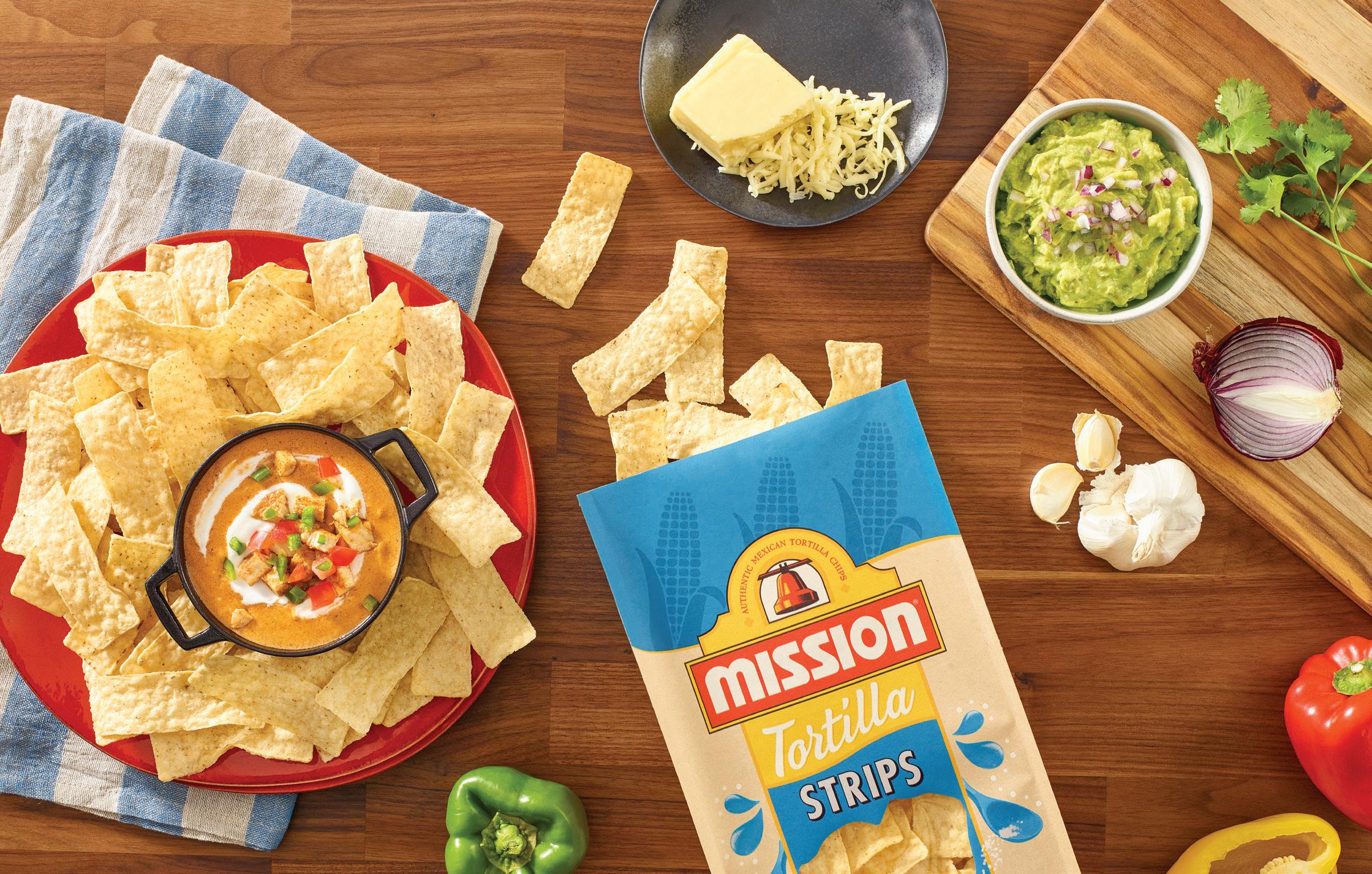

by sarah baird, photos by romney caruso
For Patrick Morris, 15 years in the produce industry means he knows a thing or two about spotting good apples — literally and figuratively. That’s why, after working across the nation, he’s now produce director for Rouses, ensuring that — among other things — every salsa and guacamole is made fresh daily.
“What we’re doing is kind of unique, because down here, food culture is huge. You could go from one end of Louisiana to the other and the same exact item is cooked — or even pronounced — differently,” laughs Morris. “At Rouses, we have our own in-house recipes that we use for all our salsas. We come up with some of them through trial and error, others are family recipes, and some we develop specifically for our customers. The recipes are pretty much proprietary to Rouses: That’s why the guacamole and salsa we have are just a little bit different — a little bit special — from what you’d get somewhere else. Everything is actually done in-house that day, so you’re getting the freshest of the fresh.”
There’s a lot of buzz about the ketogenic or keto diet, which is a low-carb, high-fat diet. We subbed the Mission Tortilla Chips on half of our nacho platter with keto-friendly Mission Pork Rinds. We also skipped the black beans, which are high-carb, and tomatoes, which are limited on the diet. You can find a list with other keto-friendly foods we carry on our website at www.rouses.com. Remember, just because the ketogenic diet is popular, that doesn’t mean most people need to, or should, do it. It’s very important to talk to your doctor before you start any weight loss program.
Keto Queso Dip
(Makes 5 cups)
WHAT YOU WILL NEED:
1 pound Kraft Shredded Pepper Jack Cheese
1/2 cup heavy cream
1/2 cup water
1 10-ounce can Ro-Tel tomatoes and green chilies, undrained
1 4.5-ounce can chopped green chilies
16 ounces Philadelphia Cream Cheese, at room temperature
1 teaspoon salt
Dash crushed red pepper flakes
Dash cayenne
HOW TO PREP:
Place all the ingredients in a microwave-safe bowl or slow cooker. Cook for 5 minutes, stopping every minute to stir. (If using a slow cooker, cook on high for 2 hours, stirring occasionally.)
And catering to what customers like has led to some creative specialties, like Rouses’ popular fruit salsa. “The fruit salsa is something we developed over the years, because mangos and pineapples were becoming the hot items in produce. We said, ‘What if we incorporated those flavors with a little bit of sweet and a little bit of heat into a salsa?’ It’s turned out to be so much more than just something for dipping chips! It’s also a great glaze for chicken to give it a little bit of a kick.”
And when it comes to what’s trending in fruits and vegetables, tropical flavors still reign supreme with customers — with a few new, spicy additions in the mix. “In produce today, tropical fruits are still huge: Dragon fruit is becoming bigger and bigger, as well as red and yellow jackfruit — it’s unique because people are using jackfruit as a meat alternative,” he explains. “It’s interesting how tastes have changed. People want their dips hotter and hotter. They don’t just want jalapeño in their guacamole, they want something like a ghost pepper in it! The heat keeps ramping up.”


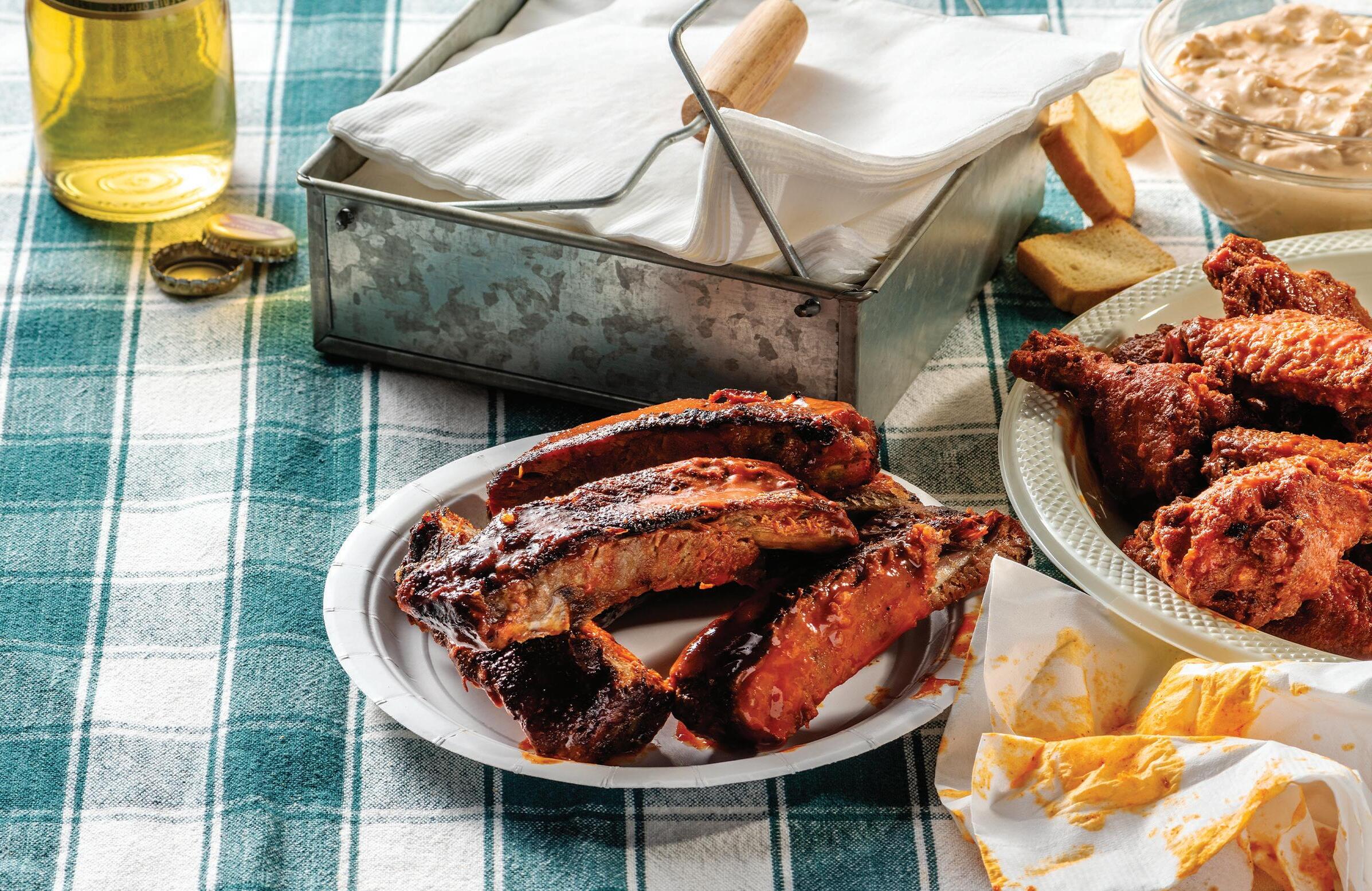
(Serves 6)
WHAT YOU WILL NEED:
2 cups lightly packed brown sugar
1 teaspoon crushed red pepper
1 teaspoon granulated garlic
Salt
Black pepper
Rouses Extra Virgin Olive Oil
3 racks of ribs, about 51/2 pounds, sliced into individual ribs
6 gallons vegetable or peanut oil, for frying
HOW TO PREP:
Place the brown sugar and spices into a large ziplock bag and shake to combine. Very lightly coat ribs in olive oil, then rub with mixture.
In a deep-fat fryer, heat oil to 325°F.
Working in batches, fry ribs for 14 to 16 minutes. Fry at 325-330°F until golden brown and a thermometer inserted into rib reads 165°F, about 14 to 16 minutes.
Toss in Buffaleaux Sauce.

“ We had hot dogs durin ga gam e an d lost So , n o more hot dogs for us. After a few years, we decided it was ridiculous, so we had them again. And lost. Never again on a game day!”
- R. HUDSON ; MY SAINTS SUPERSTITION
WHAT YOU WILL NEED:
8 ounces salted butter
1 teaspoon crushed red pepper
1 clove of garlic, mashed and minced
1/2 bottle of Rouses Hot Sauce
1/2 bottle of Melinda’s XXX Hot Sauce
Cornstarch, as needed, to thicken
HOW TO PREP:
Melt butter in a small saucepan. Stir in the red pepper, garlic and hot sauces. Add cornstarch to thicken, as needed. Pour over ribs.
“ I have to get out of bed at 6:15am, put my “special apparel” on, drive to get boudin for breakfast at 9am, then drink my Dos Equis 30 minutes before kickoff. If I fail to do any of those things, the Saints end up losing. I was undefeated last year. The only times I failed to do any of those things were days that I was stuck at work, and the Saints ended up losing. ”
- C. BURNWORTH ; MY SAINTS SUPERSTITION
“ When we are winning, and someone walks in the room and we start losing, we kick them out !”
- L. BOUDREAUX ; MY SAINTS SUPERSTITION

Save on your favorite brands with our new digital coupons. Get offers online at www.rouses.com and redeem in the store with no need to download yet another mobile app. Create your free account today.






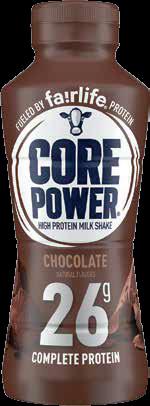




DRY AGED AT LEAST 25 DAYS

We dry age USDA Choice beef on site, in custom dry-aged beef lockers, for at least 25 days before it is trimmed and cut into steaks. Dry aging allows the beef’s enzymes to break down the collagen and muscle fibers, resulting in a rich, buttery texture and more intense beef flavor.
Available at select Rouses Markets.

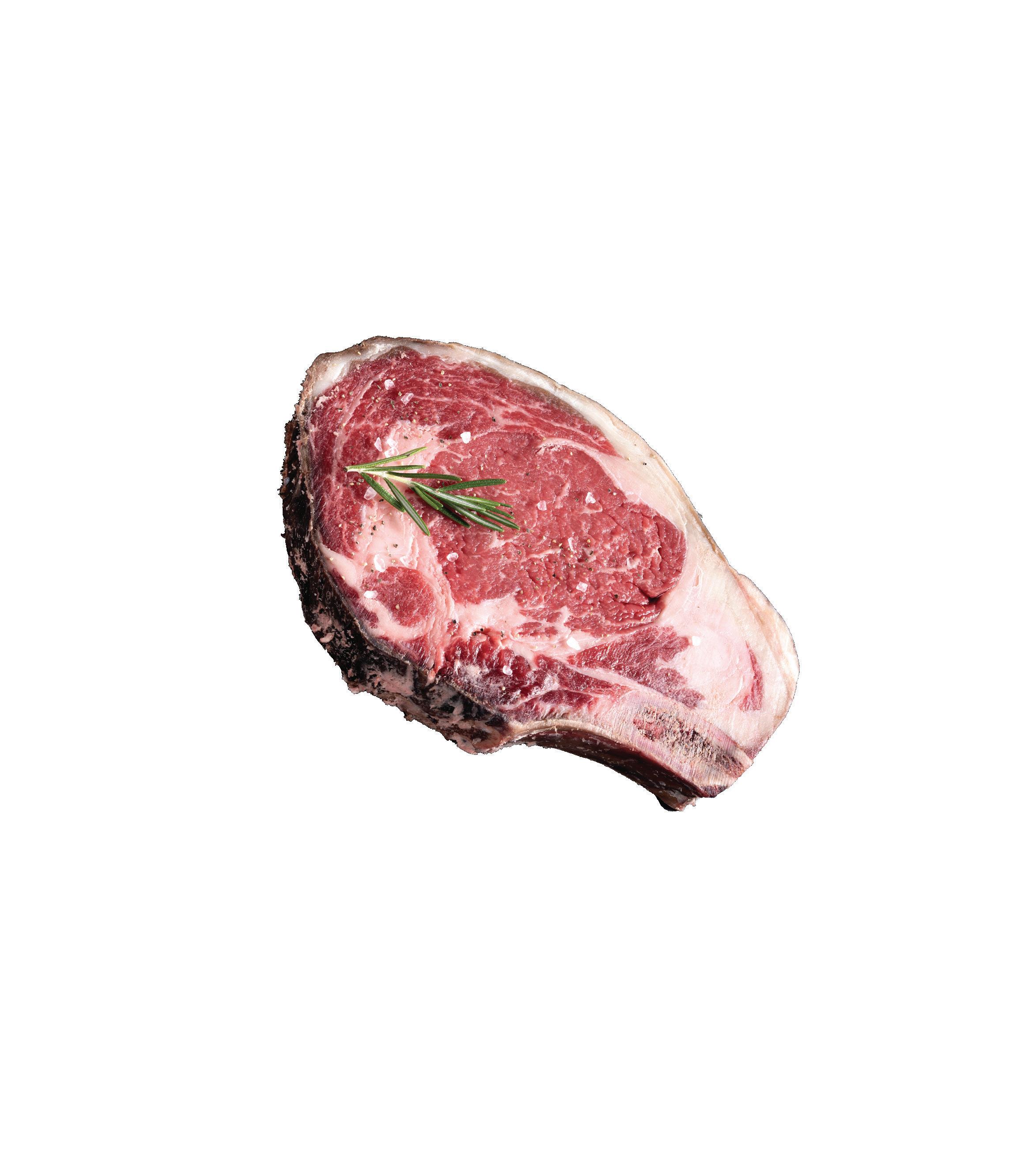

Cajun jambalaya, New Orleans red beans and rice, mini muffalettas and po-boys, even ribs and chicken. Our gameday spread can’t be beat. Order ahead at your neighborhood Rouses Markets.